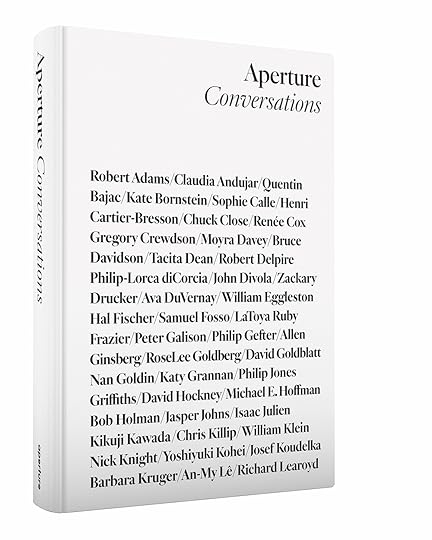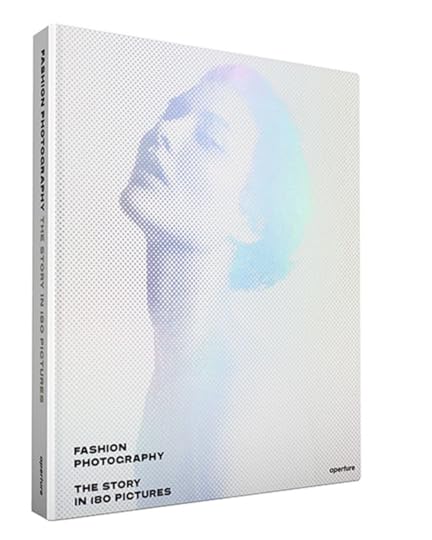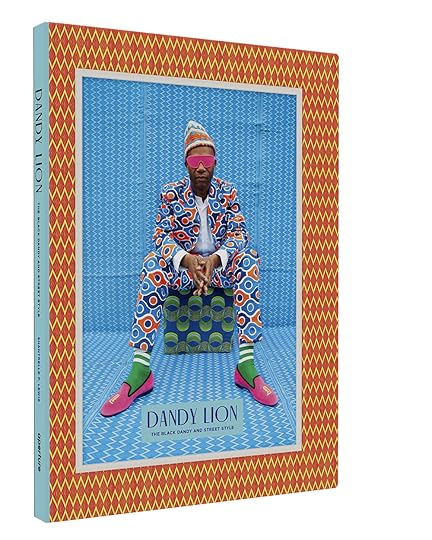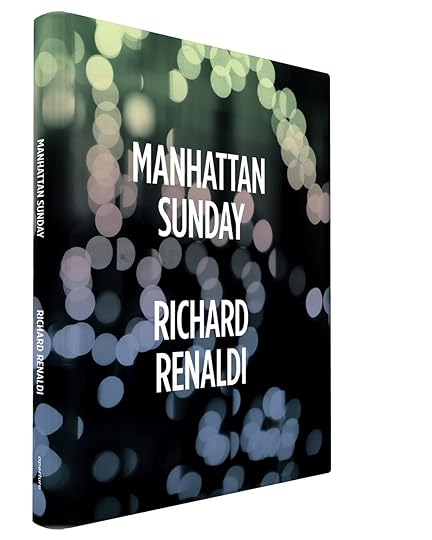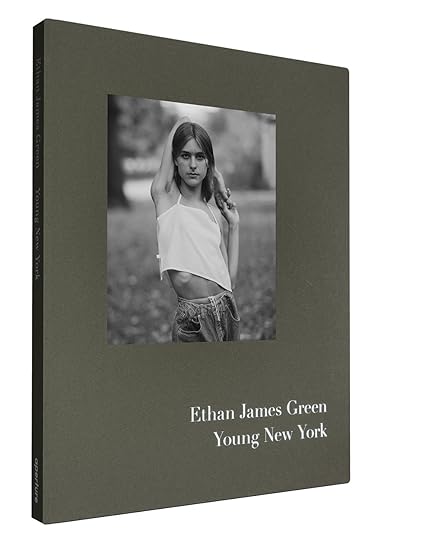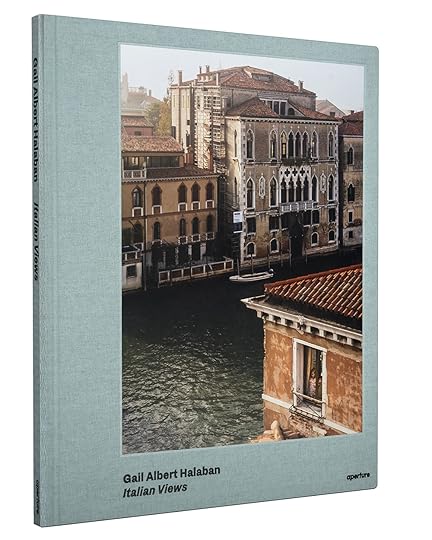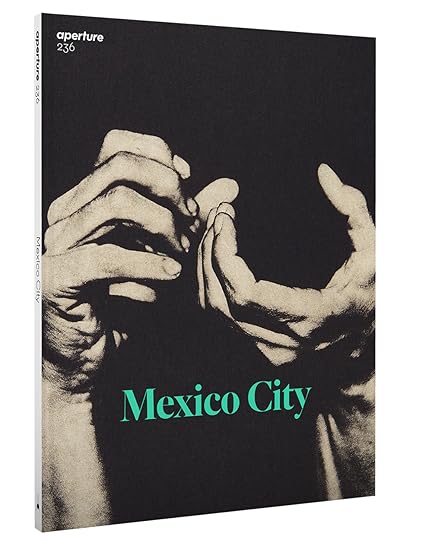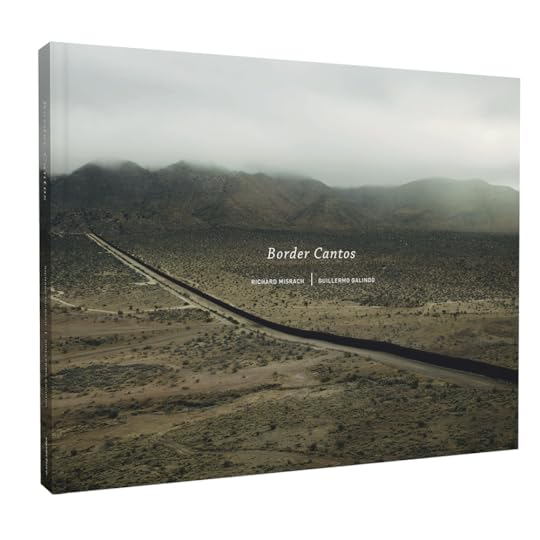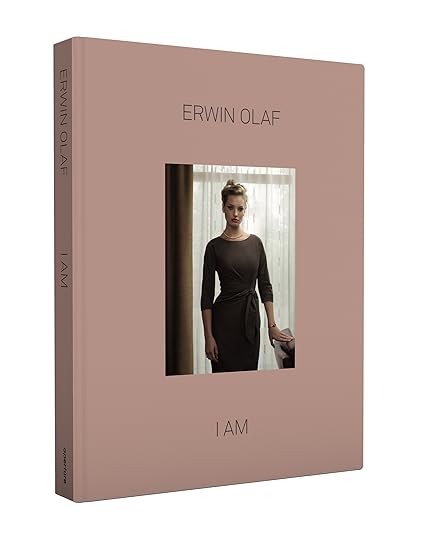Aperture's Blog, page 78
December 18, 2019
Revisiting African Portraiture, Through the Female Gaze
Sandrine Colard and Laurence Butet-Roch examine the history of how African women have been pictured, and in turn, how they look back at the viewer.
By Laurence Butet-Roch
A double entendre is at the heart of Sandrine Colard’s latest curatorial achievement, the exhibition The Way She Looks: A History of Female Gazes in African Portraiture, recently on display at the Ryerson Image Centre in Toronto. The title can indeed be interpreted in two ways. Immediately, it speaks to how a woman appears to us, the spectators, in an image; what we can infer from her style, her posture, her expression. Such a reading brings forth the responsibility we have, as members of the public, in interpreting these different cues to (re)construct the identity of the sitter, and to imagine the conditions of the photographic encounter. Yet moving through the three sequential sections of the show—“The Birth of a Gaze,” which covers colonial representations during the nineteenth and early twentieth centuries; “The Visual Soliloquy,” which focuses on the studio work of celebrated mid-century African artists, such as Malick Sidibé, Seydou Keïta, and J.D. ‘Okhai Ojeikere; and “Self-Possessed,” which highlights the different themes that contemporary photographers on the continent explore through portraiture—another understanding emerges. It is not only the way that the women look to us, but also the way they look at us, at the photographer, and what this gaze conveys. Colard explained to me exactly how this expanded understanding of the female gaze reframes the history of the medium.

A. C. Gomes & Sons, Natives [sic] Hair Dressing, Zanzibar, Tanzania, late 19th century
Courtesy The Walther Collection and Stevenson, Cape Town and Johannesburg
Laurence Butet-Roch: What makes this particular moment ripe for examining the history of African portraiture through the perspective of the female gaze?
Sandrine Colard: Looking back at the role of art, including photography, in depicting African women and women of African descent is very tied to the arrival of new curators from these very communities. In the last year, there was the exhibition Aunty! African Women in the Frame, 1870 to the Present at United Photo Industries Gallery in Brooklyn, cocurated by Laylah Amatullah Barrayn and Catherine E. McKinley—which showed a selection of images from McKinley’s collection and centered African women—as well as Posing Modernity: The Black Model from Manet and Matisse to Today, based on Denise Murrell’s dissertation, which started at the Wallach Art Gallery at Columbia University and traveled to the Musée d’Orsay in Paris. These exhibitions, which present a different view of photographic and art history, exist because the profession is changing thanks to the diverse profiles of new curators.
And, in regards to The Way She Looks, it harks back to when I was doing my PhD in art history at Columbia University. Each time there was a discussion about a Black character in art, especially a Black female character, it always revolved around issues related to the body and its exploitation. I’m a Black woman, and most of my peers and myself don’t think of ourselves as only that, a body. When we consider this disconnect, this show is both overdue and obvious. While the question of the body remains relevant, there’s room for another history of Black women, where we see that they had (and have), even in difficult circumstances, the power of shaping the way they want to be seen.
Butet-Roch: Your notion of the female gaze includes women photographers’ visions, but also the gaze that female sitters return to the photographer. What can be learned from paying attention to the gaze of the sitters?
Colard: When you look at colonial images of African subjects from the late nineteenth, early twentieth centuries, only one woman is named; the rest are labeled according to their ethnographic “type.” Yet if you were to ignore the captions, and when you really look at these people—not just glance—the range of expressions and gazes is a testament to their humanity, and it completely defeats the caption that tries to reduce them to a type. In fact, it ridicules the caption. Take the image by Alfred Martin Duggan-Cronin entitled Bakgatla: when you look at how this woman poses, you see that there’s a lot more to her than what the caption suggests. Of course, since we were not there and we have no account of the photo session, we’ll never know exactly how the photographic transaction went. What we do know is that the photographer was undertaking the ambitious project The Bantu Tribes of South Africa, which was conceived as an encyclopedia of ethnographic “types” and “primitive” people. Many of his photographs don’t match the anthropographic aesthetic of the time. Maybe it was because the photographer deliberately strayed away from it, or, more likely, because the women he encountered, via their gaze, refused to be reduced and encapsulated by a type.
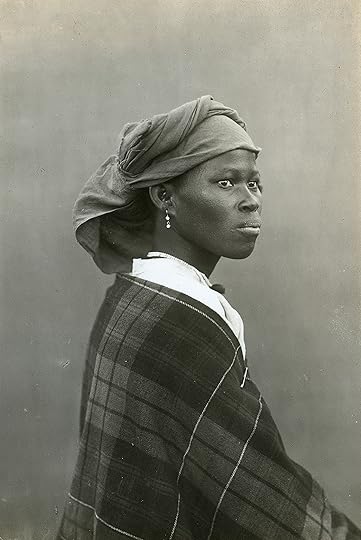
Alfred Martin Duggan-Cronin, Bakgatla, South Africa, early to mid 20th century
Courtesy The Walther Collection, Stevenson, Cape Town and Johannesburg, and The McGregor Museum, Kimberley
Butet-Roch: Beyond revealing the complexity of the relationship between the photographer and the sitter, how do these gazes involve the viewer and interrogate the act of looking?
Colard: I really love Ariella Azoulay’s concept of the responsibility that we have toward the images, even one hundred years later. When all the images were hung on the wall, I was deeply moved, because I felt that they were looking back to ask for meaningful engagement from the viewer. I’m a strong believer that we have a responsibility to the subject, not only when we’re the photographer taking the picture, but also in regard to how we use the photos afterwards, how we present them, how we frame them, and the discourse that we build around them. I’ve had a sense that in the last few decades, we have attributed so much power to the colonial gaze. We read images from Africa through that lens only, to the point that we became blind to anything else the subject within the image was expressing.
Bearing this in mind, it was very important for me to include a historical perspective in the exhibition, because so often, when we discuss the great contemporary photographers—such as Zanele Muholi, Joana Choumali, or Aida Muluneh—they are presented as if they came out of a vacuum, that there was nothing before them. Such a timeline is not doing justice to the agency of the sitter, nor to the work of some of these artists’ predecessors. Only very recently was the photographer Felicia Abban recognized in the Western Hemisphere. She was a portraitist who had her own studio in Accra, Ghana, from the 1950s on. This changes everything, and I’m sure that more research will demonstrate that she was not the only one.
Butet-Roch: How can that expanded notion of the female gaze disrupt our understanding of the role of women in photography, on the one hand, but also our perception of African women as “powerless” in their representation?
Colard: It actually also tells us a lot about the art world. Take for instance how Seydou Keïta has become this icon and darling of the art world in the West. For the longest time, he was considered an artisan, that is until he was adopted by the art world of the West and became an artist. Yet, when subjects were stepping inside his studio, they were as much of an author as he was. They picked him to photograph them, they often chose and created the clothes they were going to wear, they brought the person with whom they wanted to be seen, and so on. Take the image of the two women that came dressed in the same way; the patterns and textiles are not trademarks of Seydou Keïta, but rather an expression of the sitters’ bonds of friendship, kinship, and solidarity. You can see this agency of the subject in the work of another African portrait photographer, Malick Sidibé. These observations contradict the Western art discourse, which tries to package him as this author who was in total control of everything he was portraying.
Butet-Roch: Why is it important to prioritize the agency of the sitter?
Colard: When we don’t recognize people, it’s very dehumanizing. Last year, the book Sexe, Race et Colonies was released. It’s a collective work featuring the analysis of respected French historians on the visual sexual exploitation of non-Western women in the French colonies. Despite its good intentions, this book insulted me. The cover of this beau-livre featured the title in neon, referencing brothels. More importantly, the texts further victimized the women photographed by failing to recognize the power they had, thereby reinforcing the stereotype of African women as powerless.
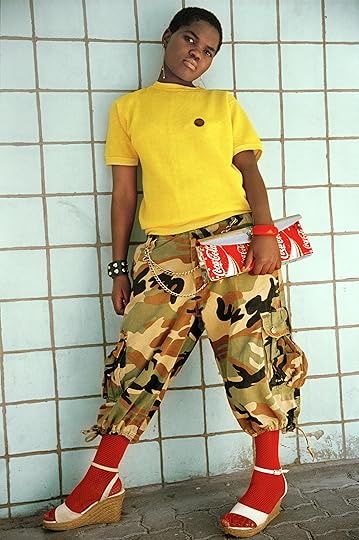
Nontsikelelo “Lolo” Veleko, Nonkululeko, from the series Beauty is in the Eye of the Beholder, 2003
Courtesy the artist and Goodman Gallery, Johannesburg
Butet-Roch: Speaking mainly about the colonial archive component of this show, you wrote for the wall text accompanying the exhibition that it promises to bear witness “to the emergence of an African female photographic gaze and subjectivity without ignoring or erasing the harmful objectifications of the past.” This rings true for the rest of the show as well. How did you balance these two objectives—especially given that you did not want to continue giving critical attention to works that have subjugated African women—in the colonial archive section, but also in the modern and contemporary sections?
Colard: I was very intentional in my selection, looking for images that geared toward this visual exploitation of the female body, but that also provide room for further reflection. In one corner of the exhibition room, there’s an image of an odalisque-like woman. She’s paired with an image of a woman who returns a very oppositional gaze, thereby suggesting the spectrum of responses to being photographed that existed in the nineteenth century. You had all kinds of situations in the studios, from consent to coercion. I’m dedicated to demonstrating that even in the sometimes small area in which these women could express themselves, they used varied expressions to convey how they felt about the situation.
Butet-Roch: The concept of dignity reverberates throughout the exhibition. You mention it in reference to Guy Tilim’s work where the “‘subjects’ dignified bearing diverges from the norms of humanitarian ‘crisis’ photography,” as well as in relation to an 1870s portrait by Barnard that presents his sitter in the formal setting usually afforded to European subjects.
Colard: Let’s start with Guy Tilim. I hesitated about including the image Fiorinda Ngoma, Her Mother Rosalia Nahamba (Holding Baby Filomena Lasinda) and Her Sister Rosali Sindali, Holding Baby Guerra (2002) until I read the 2014 article “One hundred years of suffering? ‘Humanitarian crisis photography’ and self-representation in the Democratic Republic of the Congo” by Aubrey Graham. The article touches on photojournalists in warzones and how they sometimes perpetuate the very things they think they’re denouncing. The article was written from the standpoint of the subjects. The author notes how in certain images, the women changed the way they posed if they were in front of a foreign war photographer. In that choice—deciding to pose in a certain way—there’s agency, and therefore, dignity. In this case, the young woman in the foreground brings her hand to her face, which historically, within her culture, signifies sorrow. Even if this image presents her as a victim, which in some respect she is, she also made a choice of expressing that in the way that she wanted.
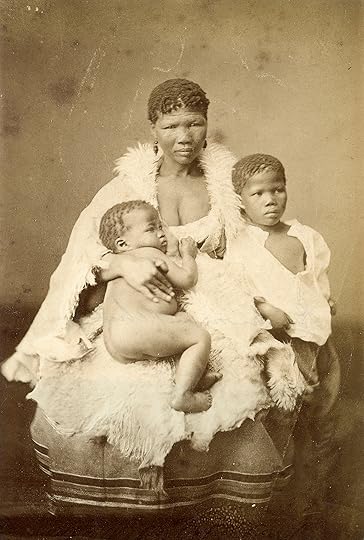
Samuel Baylis Barnard, Bushwoman [sic] and Children, South Africa (Portrait of !Kweiten ta //ken), 1874–1875,
Courtesy The Walther Collection and Stevenson, Cape Town and Johannesburg
Butet-Roch: While in the Barnard portrait, it’s arguably the photographer’s choice of placing the subject within a formal setting that is understood, through a colonial gaze, as “elevating” her.
Colard: In this image, the woman, whose name is !kweiten ta ||ken, is not represented in the usual anthropological codes of the time, but rather according to European codes, which make her appear “dignified.” However, what I think is interesting is that it makes us reflect on how the anthropological portrait is intended to entirely dissolve the subject. The subjects are never named, so they’re not commemorated, nor even presented as individuals. They’re a type. Sometimes, the more you are imaged, the less visible you become. Images of Africans at the turn of the nineteenth century were primitivizing in order to justify the presence of the colonizer as a “civilizing” force. Yet, this image by Samuel Baylis Barnard is valorizing her aesthetically, and the fact that the caption includes her name is very charged with meaning. When you are represented as a nameless “type,” you are generalized, and in fact, you are undergoing the exact opposite of a portrait session, which seeks to seize you and no one else. Naming her is individualizing her, recognizing her uniqueness, and therefore making her the opposite of a type.
Butet-Roch: Perhaps because I read it recently, I had the following quote by bell hooks in mind when going through the exhibition: “Understanding marginality as position and place of resistance is crucial for oppressed, exploited, colonized people. If we only view the margin as sign marking the despair, a deep nihilism penetrates in a destructive way the very ground of our being.” The photographs produced by African artists from the later part of the twentieth century until now seem to heed to that call in a variety of ways. Could you speak to that?
Colard: This quote reminds me of Frederick Douglass and the double consciousness. The “benefit” of being part of a marginalized or minority community is that you always have double insights into the world around you. Even though it’s painful, this position is an extremely rich one, as we can see in the works of many contemporary artists who are using the genre of portraiture to talk about more than simply the representation and interpretation of the body. Imagine if, as a Black woman artist, I was only allowed to talk about the body. That’d be extremely restrictive. Hence, it was important for me to show the diversity of what they could do with the portrait genre, how it could be used to talk about issues that concerned them. For example, Mimi Cherono Ng’ok talks about homecoming, the uncanny, and what it is like to look at your family members as strangers when you come back from somewhere else.
Butet-Roch: Mikhael Subotzky once recounted how he and Thabiso Sekgala discussed what makes a good portrait work. He said that they both felt that it was the “duality of the subject being both present and distant” that is “engaged with the photographer and comfortable, but also pining to be somewhere else and seemingly happy to display this longing in their manner and stance.” What do you feel makes a portrait work?
Colard: Indeed, it seems that what exceeds the control of the photographer is what is of interest for me in a portrait. The unexpected is what makes the portrait work, because it needs to be a collaboration. The photographer can’t and shouldn’t have all the keys.
Laurence Butet-Roch is a photographer, writer, and educator living in Toronto. She is currently pursuing a PhD in environmental studies at York University, examining the discourses perpetuated by visual representation of environmental contamination in mainstream media.
The post Revisiting African Portraiture, Through the Female Gaze appeared first on Aperture Foundation NY.
Revisiting African Portrature, Through the Female Gaze
Sandrine Colard and Laurence Butet-Roch examine the history of how African women have been pictured, and in turn, how they look back at the viewer.
By Laurence Butet-Roch
A double entendre is at the heart of Sandrine Colard’s latest curatorial achievement, the exhibition The Way She Looks: A History of Female Gazes in African Portraiture, recently on display at the Ryerson Image Centre in Toronto. The title can indeed be interpreted in two ways. Immediately, it speaks to how a woman appears to us, the spectators, in an image; what we can infer from her style, her posture, her expression. Such a reading brings forth the responsibility we have, as members of the public, in interpreting these different cues to (re)construct the identity of the sitter, and to imagine the conditions of the photographic encounter. Yet moving through the three sequential sections of the show—“The Birth of a Gaze,” which covers colonial representations during the nineteenth and early twentieth centuries; “The Visual Soliloquy,” which focuses on the studio work of celebrated mid-century African artists, such as Malick Sidibé, Seydou Keïta, and J.D. ‘Okhai Ojeikere; and “Self-Possessed,” which highlights the different themes that contemporary photographers on the continent explore through portraiture—another understanding emerges. It is not only the way that the women look to us, but also the way they look at us, at the photographer, and what this gaze conveys. Colard explained to me exactly how this expanded understanding of the female gaze reframes the history of the medium.

A. C. Gomes & Sons, Natives [sic] Hair Dressing, Zanzibar, Tanzania, late 19th century
Courtesy The Walther Collection and Stevenson, Cape Town and Johannesburg
Laurence Butet-Roch: What makes this particular moment ripe for examining the history of African portraiture through the perspective of the female gaze?
Sandrine Colard: Looking back at the role of art, including photography, in depicting African women and women of African descent is very tied to the arrival of new curators from these very communities. In the last year, there was the exhibition Aunty! African Women in the Frame, 1870 to the Present at United Photo Industries Gallery in Brooklyn, cocurated by Laylah Amatullah Barrayn and Catherine E. McKinley—which showed a selection of images from McKinley’s collection and centered African women—as well as Posing Modernity: The Black Model from Manet and Matisse to Today, based on Denise Murrell’s dissertation, which started at the Wallach Art Gallery at Columbia University and traveled to the Musée d’Orsay in Paris. These exhibitions, which present a different view of photographic and art history, exist because the profession is changing thanks to the diverse profiles of new curators.
And, in regards to The Way She Looks, it harks back to when I was doing my PhD in art history at Columbia University. Each time there was a discussion about a Black character in art, especially a Black female character, it always revolved around issues related to the body and its exploitation. I’m a Black woman, and most of my peers and myself don’t think of ourselves as only that, a body. When we consider this disconnect, this show is both overdue and obvious. While the question of the body remains relevant, there’s room for another history of Black women, where we see that they had (and have), even in difficult circumstances, the power of shaping the way they want to be seen.
Butet-Roch: Your notion of the female gaze includes women photographers’ visions, but also the gaze that female sitters return to the photographer. What can be learned from paying attention to the gaze of the sitters?
Colard: When you look at colonial images of African subjects from the late nineteenth, early twentieth centuries, only one woman is named; the rest are labeled according to their ethnographic “type.” Yet if you were to ignore the captions, and when you really look at these people—not just glance—the range of expressions and gazes is a testament to their humanity, and it completely defeats the caption that tries to reduce them to a type. In fact, it ridicules the caption. Take the image by Alfred Martin Duggan-Cronin entitled Bakgatla: when you look at how this woman poses, you see that there’s a lot more to her than what the caption suggests. Of course, since we were not there and we have no account of the photo session, we’ll never know exactly how the photographic transaction went. What we do know is that the photographer was undertaking the ambitious project The Bantu Tribes of South Africa, which was conceived as an encyclopedia of ethnographic “types” and “primitive” people. Many of his photographs don’t match the anthropographic aesthetic of the time. Maybe it was because the photographer deliberately strayed away from it, or, more likely, because the women he encountered, via their gaze, refused to be reduced and encapsulated by a type.

Alfred Martin Duggan-Cronin, Bakgatla, South Africa, early to mid 20th century
Courtesy The Walther Collection, Stevenson, Cape Town and Johannesburg, and The McGregor Museum, Kimberley
Butet-Roch: Beyond revealing the complexity of the relationship between the photographer and the sitter, how do these gazes involve the viewer and interrogate the act of looking?
Colard: I really love Ariella Azoulay’s concept of the responsibility that we have toward the images, even one hundred years later. When all the images were hung on the wall, I was deeply moved, because I felt that they were looking back to ask for meaningful engagement from the viewer. I’m a strong believer that we have a responsibility to the subject, not only when we’re the photographer taking the picture, but also in regard to how we use the photos afterwards, how we present them, how we frame them, and the discourse that we build around them. I’ve had a sense that in the last few decades, we have attributed so much power to the colonial gaze. We read images from Africa through that lens only, to the point that we became blind to anything else the subject within the image was expressing.
Bearing this in mind, it was very important for me to include a historical perspective in the exhibition, because so often, when we discuss the great contemporary photographers—such as Zanele Muholi, Joana Choumali, or Aida Muluneh—they are presented as if they came out of a vacuum, that there was nothing before them. Such a timeline is not doing justice to the agency of the sitter, nor to the work of some of these artists’ predecessors. Only very recently was the photographer Felicia Abban recognized in the Western Hemisphere. She was a portraitist who had her own studio in Accra, Ghana, from the 1950s on. This changes everything, and I’m sure that more research will demonstrate that she was not the only one.
Butet-Roch: How can that expanded notion of the female gaze disrupt our understanding of the role of women in photography, on the one hand, but also our perception of African women as “powerless” in their representation?
Colard: It actually also tells us a lot about the art world. Take for instance how Seydou Keïta has become this icon and darling of the art world in the West. For the longest time, he was considered an artisan, that is until he was adopted by the art world of the West and became an artist. Yet, when subjects were stepping inside his studio, they were as much of an author as he was. They picked him to photograph them, they often chose and created the clothes they were going to wear, they brought the person with whom they wanted to be seen, and so on. Take the image of the two women that came dressed in the same way; the patterns and textiles are not trademarks of Seydou Keïta, but rather an expression of the sitters’ bonds of friendship, kinship, and solidarity. You can see this agency of the subject in the work of another African portrait photographer, Malick Sidibé. These observations contradict the Western art discourse, which tries to package him as this author who was in total control of everything he was portraying.
Butet-Roch: Why is it important to prioritize the agency of the sitter?
Colard: When we don’t recognize people, it’s very dehumanizing. Last year, the book Sexe, Race et Colonies was released. It’s a collective work featuring the analysis of respected French historians on the visual sexual exploitation of non-Western women in the French colonies. Despite its good intentions, this book insulted me. The cover of this beau-livre featured the title in neon, referencing brothels. More importantly, the texts further victimized the women photographed by failing to recognize the power they had, thereby reinforcing the stereotype of African women as powerless.

Nontsikelelo “Lolo” Veleko, Nonkululeko, from the series Beauty is in the Eye of the Beholder, 2003
Courtesy the artist and Goodman Gallery, Johannesburg
Butet-Roch: Speaking mainly about the colonial archive component of this show, you wrote for the wall text accompanying the exhibition that it promises to bear witness “to the emergence of an African female photographic gaze and subjectivity without ignoring or erasing the harmful objectifications of the past.” This rings true for the rest of the show as well. How did you balance these two objectives—especially given that you did not want to continue giving critical attention to works that have subjugated African women—in the colonial archive section, but also in the modern and contemporary sections?
Colard: I was very intentional in my selection, looking for images that geared toward this visual exploitation of the female body, but that also provide room for further reflection. In one corner of the exhibition room, there’s an image of an odalisque-like woman. She’s paired with an image of a woman who returns a very oppositional gaze, thereby suggesting the spectrum of responses to being photographed that existed in the nineteenth century. You had all kinds of situations in the studios, from consent to coercion. I’m dedicated to demonstrating that even in the sometimes small area in which these women could express themselves, they used varied expressions to convey how they felt about the situation.
Butet-Roch: The concept of dignity reverberates throughout the exhibition. You mention it in reference to Guy Tilim’s work where the “‘subjects’ dignified bearing diverges from the norms of humanitarian ‘crisis’ photography,” as well as in relation to an 1870s portrait by Barnard that presents his sitter in the formal setting usually afforded to European subjects.
Colard: Let’s start with Guy Tilim. I hesitated about including the image Fiorinda Ngoma, Her Mother Rosalia Nahamba (Holding Baby Filomena Lasinda) and Her Sister Rosali Sindali, Holding Baby Guerra (2002) until I read the 2014 article “One hundred years of suffering? ‘Humanitarian crisis photography’ and self-representation in the Democratic Republic of the Congo” by Aubrey Graham. The article touches on photojournalists in warzones and how they sometimes perpetuate the very things they think they’re denouncing. The article was written from the standpoint of the subjects. The author notes how in certain images, the women changed the way they posed if they were in front of a foreign war photographer. In that choice—deciding to pose in a certain way—there’s agency, and therefore, dignity. In this case, the young woman in the foreground brings her hand to her face, which historically, within her culture, signifies sorrow. Even if this image presents her as a victim, which in some respect she is, she also made a choice of expressing that in the way that she wanted.

Samuel Baylis Barnard, Bushwoman [sic] and Children, South Africa (Portrait of !Kweiten ta //ken), 1874–1875,
Courtesy The Walther Collection and Stevenson, Cape Town and Johannesburg
Butet-Roch: While in the Barnard portrait, it’s arguably the photographer’s choice of placing the subject within a formal setting that is understood, through a colonial gaze, as “elevating” her.
Colard: In this image, the woman, whose name is !kweiten ta ||ken, is not represented in the usual anthropological codes of the time, but rather according to European codes, which make her appear “dignified.” However, what I think is interesting is that it makes us reflect on how the anthropological portrait is intended to entirely dissolve the subject. The subjects are never named, so they’re not commemorated, nor even presented as individuals. They’re a type. Sometimes, the more you are imaged, the less visible you become. Images of Africans at the turn of the nineteenth century were primitivizing in order to justify the presence of the colonizer as a “civilizing” force. Yet, this image by Samuel Baylis Barnard is valorizing her aesthetically, and the fact that the caption includes her name is very charged with meaning. When you are represented as a nameless “type,” you are generalized, and in fact, you are undergoing the exact opposite of a portrait session, which seeks to seize you and no one else. Naming her is individualizing her, recognizing her uniqueness, and therefore making her the opposite of a type.
Butet-Roch: Perhaps because I read it recently, I had the following quote by bell hooks in mind when going through the exhibition: “Understanding marginality as position and place of resistance is crucial for oppressed, exploited, colonized people. If we only view the margin as sign marking the despair, a deep nihilism penetrates in a destructive way the very ground of our being.” The photographs produced by African artists from the later part of the twentieth century until now seem to heed to that call in a variety of ways. Could you speak to that?
Colard: This quote reminds me of Frederick Douglass and the double consciousness. The “benefit” of being part of a marginalized or minority community is that you always have double insights into the world around you. Even though it’s painful, this position is an extremely rich one, as we can see in the works of many contemporary artists who are using the genre of portraiture to talk about more than simply the representation and interpretation of the body. Imagine if, as a Black woman artist, I was only allowed to talk about the body. That’d be extremely restrictive. Hence, it was important for me to show the diversity of what they could do with the portrait genre, how it could be used to talk about issues that concerned them. For example, Mimi Cherono Ng’ok talks about homecoming, the uncanny, and what it is like to look at your family members as strangers when you come back from somewhere else.
Butet-Roch: Mikhael Subotzky once recounted how he and Thabiso Sekgala discussed what makes a good portrait work. He said that they both felt that it was the “duality of the subject being both present and distant” that is “engaged with the photographer and comfortable, but also pining to be somewhere else and seemingly happy to display this longing in their manner and stance.” What do you feel makes a portrait work?
Colard: Indeed, it seems that what exceeds the control of the photographer is what is of interest for me in a portrait. The unexpected is what makes the portrait work, because it needs to be a collaboration. The photographer can’t and shouldn’t have all the keys.
Laurence Butet-Roch is a photographer, writer, and educator living in Toronto. She is currently pursuing a PhD in environmental studies at York University, examining the discourses perpetuated by visual representation of environmental contamination in mainstream media.
The post Revisiting African Portrature, Through the Female Gaze appeared first on Aperture Foundation NY.
How a No-Frills Zine Transformed a British Town
For ten years, Adam Murray and Robert Parkinson have celebrated the hyperlocal through their expansive photo project.
By Holly Black
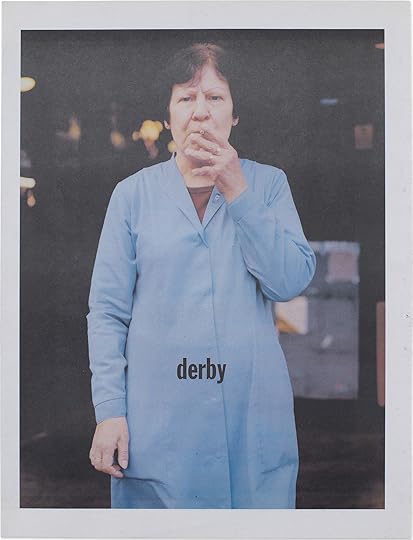
From Preston is my Paris: 2009–2019
Courtesy the artist
Britain’s ubiquitous graffiti-strewn carparks, rundown bus stations, and no-frills pubs might not seem like obvious subjects for artistic scrutiny. But these seemingly innocuous places hold a special kind of magic for Adam Murray and Robert Parkinson, who started documenting them a decade ago in Preston, the northern city where both artists lived and worked at the time. Now, the pair looks over the legacy of their collaborative project with a new book, Preston is my Paris: 2009–2019, presenting a slice of the huge amount of imagery they produced.
Murray and Parkinson met through University of Central Lancashire and quickly struck up a friendship through a mutual interest in photography, identifying the city’s relative lack of visual culture—particularly compared to its music and nightlife scenes. To fill this gap, they began producing a modest black-and-white, hand-stapled zine called Preston is my Paris as a way of celebrating largely overlooked areas of the city and the people that populate them (Murray is now a lecturer at Central Saint Martins and Manchester Metropolitan University; Parkinson still mainly works as a photographer). This DIY approach included new and found photos and random bits of ephemera, collated with little editorial intervention, along with modest distribution that consisted of handing the zines out for free.

From Preston is my Paris: 2009–2019
Courtesy the artist
“It was pretty simple, there wasn’t much concept—it was just for fun!” says Parkinson, who had no background in photography and only began shooting at Murray’s suggestion. “I picked up a camera two weeks after I graduated,” he adds, “and my first roll of film was in the first zine. We learned as we went along—simple things, like the fact you need multiples of four pages. We would print out a mock-up and everything would be out of sync. We had no idea about those things.”
This small-scale project—with a self-effacing title that Murray describes as “nicked off of a Clarks shoes advert that made British cities look like exotic places”—grew a local following, thanks largely to conversations initiated by the pair as they traversed the city looking for people and places to photograph, from young clubbers to older couples like Iris and John, who were snapped following a jovial chat in the pub. “It was a form of hyperlocal social media, because people would pick up the zine to see if they or anyone they recognized was in it,” Parkinson explains.

From Preston is my Paris: 2009–2019
Courtesy the artist
Murray and Parkinson’s self-published labors of love stand out because they are born out of two individuals who really understand the city that they live in. Their celebratory approach, with plenty of subjects actively embracing the presence of the camera, eludes any sense of voyeurism; it is unselfconscious and self-assured in a way that only comes from being comfortable in your environment—and perhaps a little bit naïve. In fact, Parkinson says that he is amazed by some of the images that he made with such a fresh eye, which can be hard to replicate “once you have trained yourself out of it.”
As the zine gained traction, so did new opportunities for Preston is my Paris to become a full-fledged imprint. Within their first year of publication, Murray and Parkinson mounted an exhibition in a disused shop, holding workshops and a pop-up portrait studio and relying on local foot traffic to get the message out. They also produced a newspaper showcasing the work of photographer Jamie Hawkesworth, whose images of Preston Bus Station celebrate its Brutalist architecture and the people who travel through it every day in alluring, saturated hues. Printing a paper both allowed for full color and was a format that many in the local community were familiar with and might be more likely to pick up. “It all comes back to understanding the city and how people might engage with what you’re doing,” says Murray. “In Preston, it is not necessarily on the top of people’s priority list to seek out art and culture, but that doesn’t mean they are not interested.”
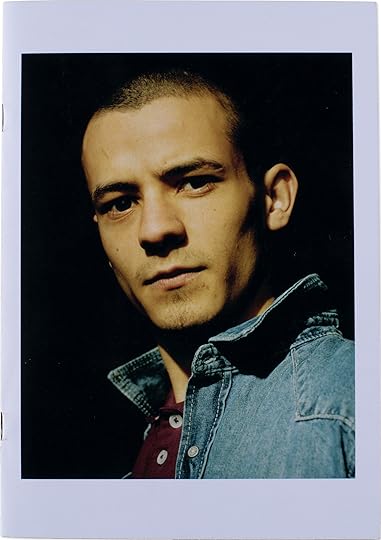
From Preston is my Paris: 2009–2019
Courtesy the artist
As far as Parkinson is concerned, Preston is my Paris—a project that has gone on to produce over forty books and numerous commissions around the world—is a far cry from the platitudes that are so often offered by museums and cultural institutions in an effort to appear locally relevant. “There’s lots of talk of ‘socially engaged’ photography, which comes across as a bit elitist,” he says, “because when you think about it, that is what all people-focused photography is. If you’re taking their photos, you’re meeting them, talking to them, and getting their stories.”
The anniversary book reflects this outlook. “We had so much material,” says Murray. “But a lot of people haven’t seen the work, so we wanted to produce an edited portfolio of images, and also include our wider reflections on the project.” As a result, they invited a range of individuals to include their thoughts on Preston is my Paris and its legacy, including Jamie Hawkesworth (whose photos are featured) and Iris Lunt, who became a subject after she met the pair in her local pub. While their personal accounts exemplify the intimate, friendly atmosphere that Preston is my Paris fostered, City Council Leader Matthew Brown takes a broader view, commenting on the zine’s ability to capture “the reality of life in our city at that time,” as well as the changes the area has endured over the last decade.

From Preston is my Paris: 2009–2019
Courtesy the artist
For Murray and Parkinson, the new publication offers a chance to look back, but also to gain new audiences, who will hopefully feel inspired by the project. “One of the main purposes was to encourage people in Preston to do more. They might like what we’ve done or hate it, but either way, the hope was that it would encourage them to do their own thing,” says Murray. Parkinson echoes this sentiment: “We want people to really see the area. There’s something interesting in any town in Britain, you’ve just got to find it.”
Holly Black is a freelance arts journalist based in London and an editor at large at Elephant magazine
Adam Murray and Robert Parkinson’s Preston is my Paris: 2009–2019 was published by Dashwood Books in November 2019. More information about the project can be found on the Preston is my Paris website.
The post How a No-Frills Zine Transformed a British Town appeared first on Aperture Foundation NY.
Joel Meyerowitz Reflects on the Magic of Provincetown
The artist looks back on a town that has long captivated his imagination, through every flowering of identity and sexual politics.

Joel Meyerowitz, Friends and Family, 1987
Courtesy the artist and Howard Greenberg Gallery
Provincetown. Land’s End. Beyond it, the wide Atlantic. People have been coming here to get away from it all since the Pilgrims came ashore in 1620. The Pilgrims stayed for five hard winter weeks at the end of the sandbar in the Atlantic known as Cape Cod before sailing across the bay to what is now Plymouth.
But for the rest of us who find our way here—travelers, artists, writers, playwrights, actors, poets, straight, gay, lesbian, gender-nonconforming, black, white, foreign, anyone who wants to move from the urban pressures to the spacious and spiritual beauty of the Outer Cape—Provincetown is where your identity and sense of “home” come to ground.
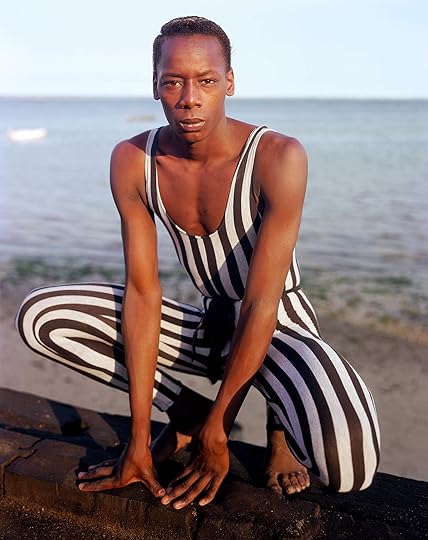
Joel Meyerowitz, Darrell, 1983
Courtesy the artist and Howard Greenberg Gallery
There is something about communities coming together at “land’s end” that creates compassionate understanding; tolerance and acceptance become the foundation of the community. P’town, as the locals call it, has been welcoming these various seekers since the nineteenth century, or even earlier. Portuguese fishermen from the Azores, picked up as crew members by Yankee whalers, settled and built a fishing community in Provincetown early on, and later, at the end of the nineteenth century, artists from New York and Boston found low-rent fishing shacks to paint in during the summers. Then, around 1910, came poets and writers and playwrights. Eugene O’Neill’s early plays were put on in the local theater. The word got out that there was a place of great natural beauty with endless sandy beaches, dunes, forests, and hidden ponds in the woods that were left over from glacial deposits of the last Ice Age, with water so pure you could drink it while swimming. A place where you could walk through the dappled light of the woods and up and over a sand dune to dive naked into the briny waters of the Atlantic.
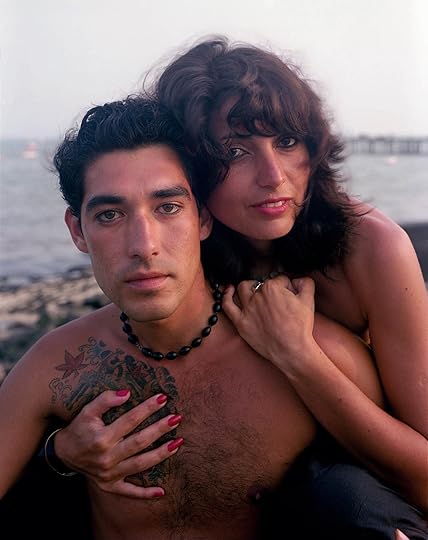
Joel Meyerowitz, Elias and Joelle, 1981
Courtesy the artist and Howard Greenberg Gallery
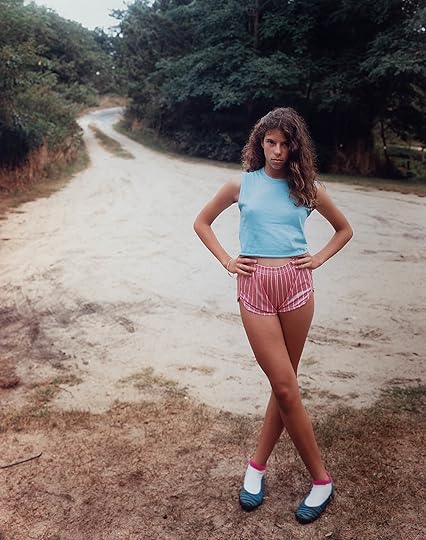
Joel Meyerowitz, Ariel, 1984
Courtesy the artist and Howard Greenberg Gallery
Apart from nature, there was in P’town an animated and joyous street life, a little like Eighth Street in Greenwich Village, which brought a spicy urban flavor to this natural paradise. There were great dance clubs and bars, good music, lots of art galleries and parties, readings, and openings, all on a scale that perfectly fit the landscape that surrounded it. During my time there in the 1970s and ’80s I knew, or often saw in town, Norman Mailer, Robert Motherwell, Mary Oliver, Myron Stout, Michael Cunningham, Stanley Kunitz, Jack Pierson, John Waters, Annie Dillard, and many others. Before them there were Marsden Hartley, Hans Hofmann, Milton Avery, even Andy Warhol, and many more young artists who got the call.
What always surprised and pleased me was how kind the townspeople and shop owners were, considering the flood of day-trippers, as well as the seasonal influx of the creative crowd and summer visitors. That generosity extended to the daily circus of sexual expression that played out in the streets and hotels, the guest houses and summer rentals, in a town that, after the summer’s end, returned to the three thousand or so permanent residents who remained there through the dead of winter.”

Joel Meyerowitz, Provincetown, Massachusetts, 1977
Courtesy the artist and Howard Greenberg Gallery
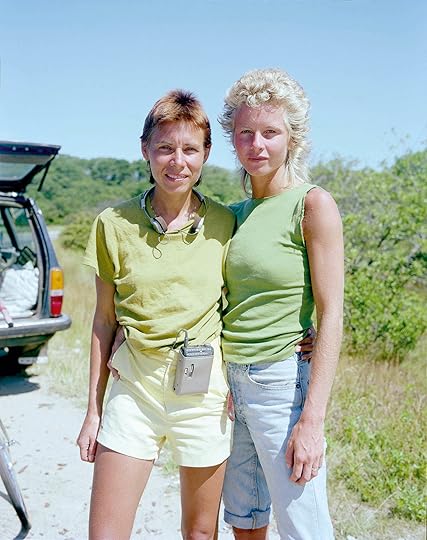
Joel Meyerowitz, Elizabeth and Melinda, 1981
Courtesy the artist and Howard Greenberg Gallery
The town lived through the AIDS crisis of the 1980s and stood strong through every flowering of identity and sexual politics of the last thirty-five years. And it did so with grace and humanity. What in many places would be judged as “other” was the norm in P’town. My kids grew up there in the summers and saw its diversity for themselves; they learned about acceptance and tolerance firsthand and have carried these lessons into their lives.
I went there originally to explore how the Cape’s light seemed to illuminate nature from within. What I discovered was the manner in which the light penetrated and exposed people’s mystery, revealing their true identities in such a way that everyone became beautiful.
This text appears in Provincetown as the artist’s introduction. Click here to purchase Provincetown.
Click here to collect limited-edition prints from Provincetown.
The post Joel Meyerowitz Reflects on the Magic of Provincetown appeared first on Aperture Foundation NY.
December 17, 2019
Spirit of the Age
Inspired by Virginia Woolf’s iconic novel Orlando, the artists in Aperture’s “Orlando” issue explore the limitless territories of identity, history, and consciousness.
By Tilda Swinton

Tilda Swinton as Orlando in a preproduction image made by director Sally Potter to help secure funding for the film Orlando, spring 1988
Courtesy the artist
Jacques Derrida’s l’avenir: the unforeseeable that will appear, although we cannot control our expectation of what it will be.
It’s 2019, the wheel has turned, and here I am again, marveling at Orlando and its impact—not only on my own life, but also on the lives of a host of my colleague-artists.
When I sent out my calling cards to the extraordinary collection of individuals whose work you open here and now, between these covers, it was with an invitation to share the inspiration of a book, a novel: Virginia Woolf ’s 1928 “writer’s holiday,” her wild-goose chase of a fantasy.
The response was universally overwhelming. And overwhelmingly personal.
Woolf calls the book a biography and refers constantly to its diligent biographer’s task and the specific challenges therein, recording the life, with deadpan sincerity, of a young nobleman whom we meet under an oak tree, in an ancestral park, during the reign of Elizabeth I. During Orlando’s journey, he encounters the love of the ancient queen and a broken heart on the frozen Thames in the court of James I, learns to distrust the envy and cupidity of poets, serves as King Charles’s ambassador to Constantinople—there transforming with unremarked ease into the form of a woman. She sips tea in drawing rooms with Alexander Pope, Joseph Addison, and Jonathan Swift; succumbs to the stifling Victorian age by breaking her ankle while running on a wild moor in a crinoline; marries an adventurer; loses and regains her estates; and, in the early twentieth century, delivers both a son and her great poem (the work of over three centuries).
How could one such fable inspire in the depths of so many disparate creative souls the sense of it being their own biography? How could one size fit all in such a way?
Maybe this is, indeed, a magic carpet of a book. It can transport so many of us so profoundly into the heart of our experience of living life again and again and again: an enchanted mirror in which to see oneself. A book about agelessness that honors our every age. A robust and reliable fellowship—all moments having, as Woolf might argue, an equality of weight, of buoyancy, of heft; all moments can do with the company of her wise, experienced perspective.
When I was a teenager, it read to me as a book about writing. Later, in my twenties, as a book about reading. Having just put the book down again, on January 31, 2019, I find that this febrile, synthetically hallucinogenic transport of a fable has slip-slid again and now reads to me as a book about revolution, about the dismantling of everything it touches, about a recalibration of perspective and will. A book about looking up.

Lenare, Vita Sackville-West, ca. 1920s
Courtesy Houghton Library, Harvard University
Our very first sight of the adolescent Orlando is of him swinging at the decapitated head of a Moor, brought back by a crusading forebear and hung in the rafters of the family’s great house as a trophy. This mindless, violent sport notwithstanding, there are frequent references throughout the book to Orlando’s discomfort at the brazen barbarism of his patrician milieu. He/she regularly ducks under the silken ropes of court enclosures in all centuries to seek the company of people in backstreets, huddled about braziers. In the East, Orlando learns perhaps the most profound lessons of all from the itinerant gypsies with whom she lives, who are embarrassed for her that she has ancestors who must have thieved their great wealth, who had the “vulgar ambition … to possess bedrooms by the hundred,” and who were only able to trace their lineage four or five hundred years, whereas their own families, nomadic peoples who had built the pyramids, went back two or three thousand.
Colonialism, then. Inherited wealth. The illogical snobbery of class. The nonsensical vagaries of xenophobia. Orlando meticulously detonates each one. Beyond everything, the question of a properly responsive “civilized” self appears to me, today, as a principal preoccupation of this synesthetic portal of a book.
It is also, of course, a vivid record of the processes of making art—the urge to interpret and describe. The imagistic vortex of Woolf ’s mind, as manifested in Orlando, is a gift to artists. It seems a large part of the reason for the deeply felt enthusiasm of this gathering of eyes and minds and hearts in these pages. And at the core of Orlando is the steady, dual pulse of two undeniable influences: the weather and the spirit of the age.
We live at a moment of stilled consciousness. All our hackles are stimulated, our noses urgently—to the wind. We’ve been straying around perilous corners recently, and there be dragons.
We tell ourselves it must have been rough in past centuries, that the Black Death, the Russian Revolution, the Great War were surely something of a challenge, that more recent developments are survivable. But we are stumbling. It’s a next-level shit show—maybe not entirely what Pharrell Williams was thinking about, but somehow best described as a room without a roof.
Maybe the questions before us right now number among some of the most profound possible: What is a society? What is a social conscience? What is social responsibility? What is a human? What future can we envisage for ourselves? What is hope?
And, certainly, this particular moment we live through, this 2019, these days, these vertiginous times—with more than Chicken Licken, whose ancient folktale has him convinced the sky is about to fall in, running for cover, for shelter, for safer, higher ground— call for a new breath and a fresh commitment to the life we mean to build here while we can.
So many lines are being drawn, differences cast in stone, daggers unsheathed, territory marked, positions owned, dignities abused.
I propose, in general and in this issue of Aperture, a contrary tack: openness, all fences down, all go molten, all arms wide.
I’ve been thinking about how certainty is becoming our nemesis. How doubtlessness is killing our ability to expand as a society and as individuals. How the once essential search for a definable, and immutable, identity has become stifling to our sense of development and the possibilities of finding true fellowship with other complex, variously wired, hesitant, sensitive beings.
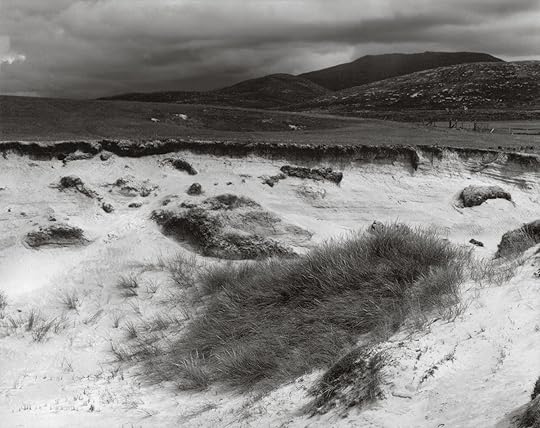
Paul Strand, Bent Grass, Machair, South Uist, Hebrides, 1954
© Paul Strand Archive/Aperture Foundation
Woolf believed the fundamental creative mind to be androgynous. Obviously, the most celebrated context within which we have come to see Orlando referenced concerns that of transformation, especially in relation to gender: as Orlando himself/herself so memorably remarks (in the film) at the critical moment of transformation, “Same person. No difference at all. Just a different sex.”
However, beyond this field of discourse—and, it has to be said, in the era of the all-gender bathroom—I have come to value the landscape of this beloved book far less as being only about gender and far more as being about the profound flexibility of the fully awake and sensate spirit. I embrace its visionary perspective as an invaluable parable about true freedom—from the imperatives of nationality, of history, and of class, as well as of gender. A directive to the existence of an authentic and responsive soul: consistent and evolving, inviolable and pure.
And now, within this issue’s panoply of colors and tastes and imaginings, I see, afresh, once more, Orlando as a story about the life and development of a human striving to become liberated entirely from the constructs of prescriptive (tired old binary) gender or social norms of any kind.
We offer on the previous spread two formal portraits by the Lenare studio in London, the go-to stamp of high-society identity, taken some forty years apart: a three-year-old girl and a pearl-bedecked lady, linked by the avatar of Orlando that they share, one in Woolf ’s book, the other in Sally Potter’s film. I’m proud to clarify: Vita Sackville-West in the pearls and me in the organza with the ribbon in my hair. Two Orlandos, here among so many others: the future ahead of them, as ours lies before us now, ready for the making.
To consider this story’s limitlessness, its sense of innate and empowered boxlessness. To consider the wider territories of identity, of dream, of heredity, of consciousness, of memory, of history, of fantasy, of the limitations of mortality, of life itself. To consider the consolation of the wilderness of the future. This was the invitation offered to our contributors here.
It has been my profound privilege to lay the table for this feast.
Tilda Swinton is the guest editor of Aperture’s “Orlando” issue.
Read more from Aperture issue 235, “Orlando,” or subscribe to Aperture and never miss an issue.
The post Spirit of the Age appeared first on Aperture Foundation NY.
December 12, 2019
12 Photographers on How They Conceptualize Their Work
Over the course of her career, curator and lecturer Sasha Wolf has heard countless young photographers say they often feel adrift in their own practices, wondering if they are doing it the “right” way. She was inspired to seek insight from a wide range of photographers about their approaches to making photographs, and, more important, a sustained body of work. Their responses are compiled in PhotoWork: Forty Photographers on Process and Practice. Below, twelve artists respond to the first question in the interview series:
What comes first for you: the idea for a project, or individual photographs that suggest a concept?

Robert Adams, Sally, Weld County, Colorado, 1984
Courtesy the artist
Robert Adams
Thinking up a project and then making pictures that fit does not, in my experience, usually result in the best pictures. Most of the books I’ve published have started with just walking and photographing, free of any plan.

Dawoud Bey, A Woman Waiting in the Doorway, Harlem, NY, 1976
Courtesy the artist
Dawoud Bey
My work always begins with an idea, with something that I need to talk about. I make my photographs in order to provoke a conversation around things that I am invested in. The challenge is how to give those concerns a resonant and coherent form so that the viewer becomes interested and invested. I want the things that matter to me to matter to the viewer.

Elinor Carucci, Bath, 2006
Courtesy the artist
Elinor Carucci
Somehow both things are happening: I can have an idea for a project and then take individual pictures that will lead me to change the project. Many times I will take pictures that I think are about one thing, but they end up being about another thing—then I listen to my own pictures and understand what my project is about. At that point, I have the idea for a project that I follow and develop.

Siân Davey, Garden Gate, 2014
Courtesy the artist
Siân Davey
My first series [published in 2015] was about my youngest daughter, Alice, who was born with Down’s syndrome. It was ignited by feelings of anger at how I felt others perceived her. I felt a need to articulate and disseminate these feelings. In that sense, the concept preempted the work.
The series I am currently working on, about my youngest son, Joseph, was inspired by an August Sander picture I saw in a gallery in Paris. Seeing the Sander print felt like a transmission—in that moment I knew exactly what I needed to do. I have always worked in medium format (6-by-7) but decided, like Sander, to work in large format (8-by-10). Working this way strips everything down. All I am left with is myself, Joseph, and our shared histories revealing themselves in that single moment.

Paul Graham, Woman Smoking Cigarette, Belfast, 1988, from New Europe
Courtesy the artist
Paul Graham
They go hand in glove. If you are a photographer who works with life, then you have to put yourself into the territory where that imagery and your thoughts might coalesce, because you need the vital lesson that first key image provides. Not the first image, but the first key image, the one that unlocks the door. The one you stumble over. It might surprise you by coming in from left field, taking things in a completely different direction, but that’s the beauty of working with the world, with the moments that time hurls your way. It’s a collaborative dance between the artist and life itself, so embrace the partnership. Often the world’s complexity is far more interesting than your concepts. If you can have the humility to admit that, you’ll do well.

Gregory Halpern, Untitled, from ZZYZX, 2016
Courtesy the artist
Gregory Halpern
My answer to this is a little messy, but working through the messiness of that process is part of the joy of fumbling my way toward clarity. It may begin with an idea, but sometimes it’s simply a hunch, or a feeling. I don’t clearly understand the evolution of the process until the work is done, and I like to take my time working on projects—A [2011] and ZZYZX [2016] each represented about five years of work, respectively. Finding out where the work will go is what keeps them going.
Once I begin to understand what will hold the work together, even if it’s just a loose binding structure at first, then I am able to narrow my field of vision, or “material,” to whatever is within the parameters of the “project.” Once I have loosely defined parameters, I am free to be as obsessive as possible within that framework. I want parameters narrow enough to make the work compelling and cohesive, but broad enough to allow myself, and my viewer, the pleasure of being able to find their own way through the work.
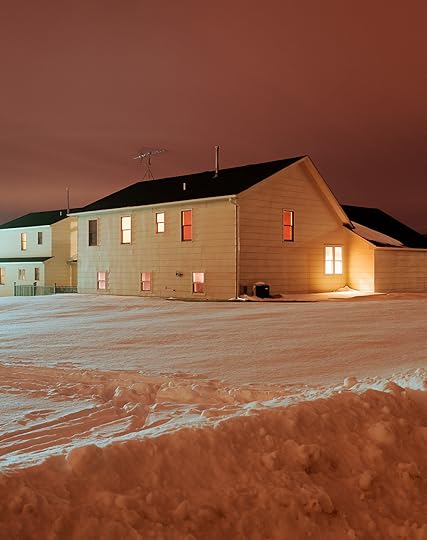
Todd Hido, #2479-a, 1999, from House Hunting, 2001
Courtesy the artist
Todd Hido
I always find the concepts in my work through making pictures and sorting them out, which clarifies my ideas. Most often I am using my intuition up front. The process of analyzing comes later.

Rinko Kawauchi, Untitled, from Utatane, 2001
Courtesy the artist
Rinko Kawauchi
Most of the time the photographs tend to be a prelude to the concept. With my earlier works Utatane and Hanabi [both 2001], for example, I carefully selected photographs to use from the pool I had accumulated after a number of years of shooting—all the while thinking about how to structure the pages of a book. To bring each to completion, at the end I went out and photographed additional shots to create the imagery I wanted to depict. For Halo [2017], a more recent work, I felt that I could achieve the desired aesthetic by amalgamating photographs I had taken for different projects—culminating in compiling the series into book form.

Catherine Opie, Untitled #6 (Immigration March, Los Angeles, CA), 2006
© Catherine Opie, Courtesy Regen Projects, Los Angeles, and Lehmann Maupin, New York, Hong Kong, and Seoul
Catherine Opie
Normally the idea of the project comes first. When I begin to make a body of work, surprises or different situations often happen that allow me to think within the original idea but still experiment. So I like to start with a concept, but I also like the freedom of how it can transpire during the making of the work.
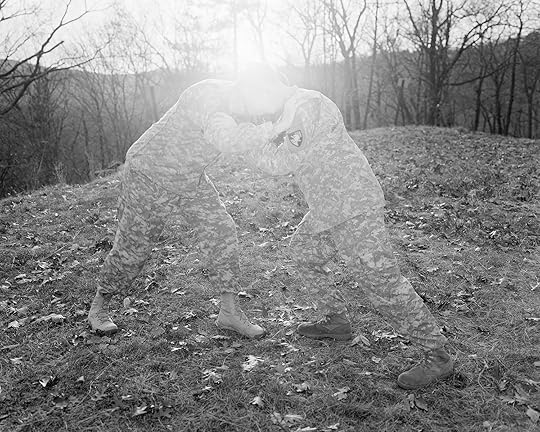
Kristine Potter, Untitled, 2009, from The Gray Line
Courtesy the artist
Kristine Potter
If we want to talk about long-term projects, I typically begin with a conceptual architecture that loosely defines where I’m going and whom I’m looking to find. When I first began work on Manifest [2018], for example, I thought it would be comprised entirely of portraits. But you’ll notice that the body of work is full of landscape pictures: those evolved because the area, Colorado’s Western Slope, was so sparsely populated that I would sometimes go a few days without making a portrait. There I was, in this incredible landscape that had all kinds of photographic history, holding a 4-by-5 camera. It came so naturally—and I can’t imagine this work existing without the landscapes—but that wasn’t the original plan. For me, it is increasingly important to avoid treating my initial concepts as a formula or something to illustrate. These ideas are necessarily loose and the magic usually happens at the margins.

Richard Renaldi, 07:51, 2015, from Manhattan Sunday (Aperture, 2016)
Courtesy the artist
Richard Renaldi
For much of my career I have focused on specific projects. I think of an idea and execute it. Either the project develops sufficiently or eventually I drop it. I have nearly as many unfinished projects as completed ones. Sometimes, one project gives rise to another. For example, a portrait series I worked on for a number of years, photographing at Greyhound bus stations across the country, led me to attempt group portraits of strangers sitting together on public benches. Those images relayed themselves into a new idea, to shoot pictures of two or more strangers posing intimately with the stipulation that they must physically touch one another. This became the genesis for Touching Strangers [2014].

Alec Soth, Peter’s Houseboat, Winona, Minnesota, 2002, from Sleeping by the Mississippi, 2004
Courtesy the artist
Alec Soth
I usually start with a vague idea. But after the first exposure, this idea invariably is transformed. I’m reminded over and over again of William Carlos Williams’s “no ideas but in things.” By the time I’m done shooting, the original idea is barely recognizable.
Responses have been edited for space. To read the full interviews, order your copy of PhotoWork here.
The post 12 Photographers on How They Conceptualize Their Work appeared first on Aperture Foundation NY.
December 11, 2019
Santu Mofokeng’s Pensive Visions of Land and Ritual
In a new series of photobooks, the revered photographer conjures the mysteries of faith in South Africa.
By Sean O’Toole

Santu Mofokeng, Animal Festoon, Mautse Cave, Clarens, 1996
© Santu Mofokeng Foundation and courtesy Lunetta Bartz, MAKER, Johannesburg, and Steidl, Göttingen, Germany
In October 2004, a few months after a handful of his black-and-white street photographs were presented in an exhibition of South African photography in Tokyo, Santu Mofokeng agreed to meet me at his Johannesburg home. The plan was to pick up on our conversations in Japan, as well as to talk about an image he had recently taken of his older brother Ishmael, which he was showing at a local gallery. Titled Eyes-Wide-Shut, Motouleng Cave, Clarens (2004), the head-and-shoulders portrait presents an aging man, with a graying Colonel Sanders goatee, wrapped in winter clothes. Two figures pass behind him, blurs in the murk of a cave. His eyes, too, are distorted, but it is nonetheless possible to detect a slight deviation in his sight. Ishmael’s right eye peers straight into the lens, but his left eye does not. It looks elsewhere, at something beyond the conjecture of words. Call it a decisive finality.
When I arrived at Mofokeng’s house, the photographer was slumped on the pavement, crying. Ishmael, he said, was dying. He motioned me into his home, pointed to a seat, and handed me a stack of postcard-size photographs. “My children cried when I showed them these.” The photographs, cheap machine prints, offered a sequential record of a road trip Mofokeng had recently undertaken with his brother to Motouleng Cave, an immense sandstone overhang near South Africa’s border with the mountainous country of Lesotho. The caves there are popular with hikers and urbanites interested in ayahuasca spiritual medicine—ceremonies. Motouleng, though, is different.

Santu Mofokeng, Prayer Service at the Altar on the Easter Weekend at Motouleng Cave, Clarens, 2006
© Santu Mofokeng Foundation and courtesy Lunetta Bartz, MAKER, Johannesburg, and Steidl, Göttingen, Germany
The cave, whose name in the central South African Sotho language loosely translates as “place of the beating drums,” has a special significance for followers of the country’s traditional animist religions. It is venerated as a place of salvation and healing. Ishmael had recently been diagnosed with tuberculosis, an opportunistic infection that is the leading cause of death among people with HIV.
“Of the many beliefs in townships, most people believe there are two kinds of HIV virus and AIDS,” Mofokeng wrote in 2011. “There is the genuine kind, identified worldwide by epidemiologists, which responds to treatment using scientifically approved methods and medicines. The other kind is transmitted by a ‘worm’ and is passed on to a person by witches, enemies, jealous relatives, friends, and so on.” Ishmael believed he was a victim of the latter, that his decline was attributable to witchcraft.

Santu Mofokeng, Eyes-Wide-Shut, Motouleng Cave, Clarens, 2004
© Santu Mofokeng Foundation and courtesy Lunetta Bartz, MAKER, Johannesburg, and Steidl, Göttingen, Germany
The drive from Johannesburg to Motouleng takes roughly four hours. The final approach is made on foot. It was an arduous trek for Ishmael, who avoided naming the illness that had brought him to the cave. He collapsed. One of the small photographs I cradled in my lap depicted this: Ishmael lying in a meadow, resembling one of the war dead photographed by Timothy H. O’Sullivan. Mofokeng bundled his brother into a wheelbarrow like a sack and pushed him to the cave, where, in the presence of resident healers and fellow pilgrims, he was fortified by the immensity of his encounter with tradition.
Three years later, in 2007, in a Johannesburg gallery during a walkthrough with me of Invoice, his first, largely self-curated survey exhibition, Mofokeng offered a shorn summary of his visit to the cave with his brother. “They gave him water and holy ash,” he said. “He felt better and said thank you to me for bringing him to Motouleng. He walked back to the car without assistance. It didn’t take him long, and he died. Anyway.”
Mofokeng quickly moved on to another photograph, which depicted two goats, sacral animals roaming the same cave, in 2004. He pointed to the optical illusion at play, of one goat seemingly balancing on another. He linked the photograph to his portrait of Ishmael. “I don’t know if Ishmael’s eyes are open or shut.” These two pictures, along with another of a horse hidden in shadow taken near a Buddhist retreat in 2003, he explained, were descriptive of his attempt to photograph magic. “Can you capture it?” he asked. “No.”

Santu Mofokeng, Sacral Animals, Motouleng Cave, Clarens, 2004
© Santu Mofokeng Foundation and courtesy Lunetta Bartz, MAKER, Johannesburg, and Steidl, Göttingen, Germany
*
Mofokeng is now sixty-three. His career is signposted by the standard markers of achievement—photobooks, exhibitions, awards, a growing body of interpretive writing—but among his peers, he remains something of an enigma. Make no mistake: Mofokeng is widely admired, particularly by younger South African photographers like Jabulani Dhlamini and Lindokuhle Sobekwa, but he is not a household name, at least not like his elder, the renowned South African photojournalist Peter Magubane.
“I find the term so weird, a painter’s painter, but if I was asked who is a photographer’s photographer, I’d say Santu,” explains the artist Mikhael Subotzky, who as a young man looked to white South African photographers working in a humanist, rather than activist, tradition of documentary—notably David Goldblatt and Guy Tillim—as models. “I am trying to think if there was a reason why,” he adds. “In some ways, it was as simple as Santu’s work wasn’t as accessible to me.”
There are various reasons Mofokeng’s work hasn’t always been available. He initially worked in news, that most ephemeral of photographic modes, covering the civil strife that gripped South Africa in the 1980s, the final decade of apartheid. Mofokeng tired of the genre’s rhetorical conventions, of producing “images bespeaking gloom, monotony, anguish, struggle, oppression,” as he wrote in 1993, and joined the African Studies Institute at the University of the Witwatersrand (Wits). Starting in 1988, he spent most of the next decade working in relative obscurity, documenting rural tenant farmers, collecting photographs of South Africa’s forgotten black middle class, and—crucially—refining his writing skills.
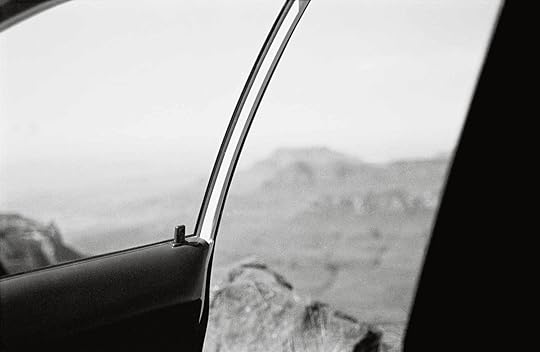
Santu Mofokeng, U-Drive Rent-a-Car, Little Switzerland, 1996
© Santu Mofokeng Foundation and courtesy Lunetta Bartz, MAKER, Johannesburg, and Steidl, Göttingen, Germany
Mofokeng worked with the revisionist historian Charles van Onselen at Wits. The environment of the institute, which Mofokeng described as “enabling,” cultivated in him a belief in his photographs’ value. It also highlighted the need to answer basic questions: What are you doing? Is this what you mean? Coming up with explanations wasn’t easy—writing was not Mofokeng’s métier, at least not initially—but the process allowed him to take ownership and responsibility for his photographs.
In 1996, he signaled the end of this withdrawal by initiating his long-term project photographing in the caves that would later attract his brother. “When I first became a professional photographer, I started working on a project called Fictional Biography, a sort of metaphorical biography of my life, going to places I would ordinarily go, making photographs of things I ordinarily do or see,” Mofokeng told the Swiss curator and art historian Corinne Diserens in 2011. Entering the caves, he said, was his way of concluding a body of work he had started in the mid-1980s.
In 2002, Mofokeng’s photography was featured in the curator Okwui Enwezor’s landmark Documenta 11 exhibition in Kassel, Germany, and, almost a decade later, Diserens organized the first international survey of his work, Chasing Shadows: Santu Mofokeng, Thirty Years of Photographic Essays (2011). Comprised of some two hundred photographs, and presented first by the Paris photography space Jeu de Paume, followed by a multicity European tour, the exhibition was organized into loose thematic clusters. Heralded by Train Church (1986), his breakthrough series of close-up portraits of religious worshippers on crowded passenger trains in Johannesburg, and fully announced by Chasing Shadows (1996–2014), a photographic essay largely made in the caves of central South Africa, Mofokeng’s interest in spirituality formed a major component of the survey. The latter essay, with its explicit focus on spirituality, includes his portrait of Ishmael. “Once in a while I make portraits,” Mofokeng told Diserens in an interview, “and some of them I’m proud of, but I can’t say I’m a portrait photographer.”
Each section of Diserens’s exhibition was introduced with text panels written by Mofokeng. They reiterated a long-held faith. “Most of the time, when I’ve looked at catalogues or exhibition texts in which experts come in and talk about my work, I don’t like it,” Mofokeng told the curator Hans Ulrich Obrist in 2002. “I was raised by a parent (my father died when I was four) who instilled in me a religious thing about always searching for meaning and purpose in everything we do. This informs my enterprise and the work that I do—I’d like to be the interpreter of my work.”

Santu Mofokeng, Soweto, 1985
© Santu Mofokeng Foundation and courtesy Lunetta Bartz, MAKER, Johannesburg, and Steidl, Göttingen, Germany
*
Lindokuhle Sobekwa, a twenty-four-year-old Magnum Photos nominee, tells a story about a visit with Mofokeng around 2013: “I wanted to show him my best pictures, which I had printed out. He looked at a few pictures. ‘You can photograph, but what have you written?’ I said nothing. ‘Take those newspapers and go read. Next time I meet with you, show me what you’ve written.’ I was very young, and I thought photography is something you don’t need to read or write about. He was teaching me.”
Sobekwa first encountered Mofokeng’s work while studying photography in high school. His teacher showed him a copy of Chasing Shadows. He says he felt a connection looking at the images. In an essay appearing in the book, Enwezor describes Mofokeng as “heir to the great black South African photographers such as Alf Khumalo, Peter Magubane, Ernest Cole and Bob Gosani, as well as to David Goldblatt.” He writes that “Mofokeng’s observational approach, his scrupulous skepticism toward the dramatic image,” is most allied to the “urban disquiet” of Cole and the “cool distance” of Goldblatt.
Mofokeng contradicts this. Magubane’s documentation of the apartheid government’s violent crackdown on a 1976 student revolt in Soweto, conceived in the 1930s as a segregated black settlement abutting Johannesburg, was particularly influential. “It was Magubane who made photography a respectable occupation,” Mofokeng told me in 2014. While Goldblatt was “an inspiration,” he said it was while working as a printer for Magubane’s mentor, the Germanborn photojournalist and documentarian Jürgen Schadeberg, in 1986, that he had a “light-bulb moment.” His series Train Church, made while journeying by train to and from work with Schadeberg, materialized this insight. Its blurred chiaroscuro lighting became a hallmark of Mofokeng’s photography.
South Africa’s passage to a nonracial democracy, however imperfect, has tended to inspire fabulist narratives about the role of color film in portraying the fullness of the new country. After the first nonracial elections in 1994, documentary photographers started to use color more frequently. By 2000, as South African photography gained wider visibility, some artists and critics began to argue that black-and white imagery was ethically oppressive and, conversely, that color dignified. Mofokeng rejected this argument as expedient and market-driven. In a 2013 note he explained how “my work and that of lefties, groups and archives, and other activists and organizations, along with their efforts, were being insulted and thrown out like so much apartheid paraphernalia and baggage.” The meaning of color in postapartheid photography certainly merits consideration, but not at the expense of some basics. While his black-and-white images are better known, Mofokeng also worked in color; selections from his color landscape series Graves (2012) were shown at the 2013 Venice Biennale.

Santu Mofokeng, In Town, Towards Selby, ca. 2011
© Santu Mofokeng Foundation and courtesy Lunetta Bartz, MAKER, Johannesburg, and Steidl, Göttingen, Germany
*
The Cape Town–based photographer Jo Ractliffe first became aware of Mofokeng around the time he joined the nonracial and activist inclined photography collective Afrapix, in 1985. Best known for her ravaged landscape pictures depicting the troubled passage to freedom in South Africa, Namibia, and Angola, Ractliffe doubts the curatorial projection of thematic certainties onto Mofokeng’s work. She describes his fragmentary and investigative output as hard to pin. “People tend to make his work seamless in a way that I don’t think it is at all,” she says. Ractliffe considers Mofokeng not coherent in the way Goldblatt was coherent, or his contemporaries at Afrapix were. She singles out his first book of photographs, Taxi-004: Santu Mofokeng (2001), an unpolished hodgepodge of text and image that the photographer played a key part in orchestrating.
“Books are a way of domesticating meaning,” Mofokeng has stated. For all its failures, his first book is nonetheless striking for an autobiographical essay titled “Lampposts,” which threads through the layout, making a case for the equal import of Mofokeng’s writing. The essay details his impoverished upbringing in Soweto, his introduction to photography in the early 1970s, his careers as a darkroom technician and a photojournalist in the 1980s, his vague immersion in activism, as well as his subsequent pursuit of a personal vision. It even features an episode involving Ishmael, who, in 1976, saw his younger brother being beaten by white bullies on the streets of Johannesburg’s city center in retaliation for protests in nearby Soweto. “I was never an activist,” writes Mofokeng. His photojournalism from the late 1980s, nonetheless, includes strongly partisan documentation of street protests, striking mine workers, and police repression, as well as the tenth-anniversary commemoration of the 1976 Soweto uprising.
This long-ago-forgotten activist work forms part of the photographer’s new twenty-one-volume anthology, Santu Mofokeng: Stories (2019). The outcome of a multiyear collaboration between Mofokeng, the bookmaker Lunetta Bartz, the editor and New York Public Library curator Joshua Chuang, and the German publisher Gerhard Steidl, the series is a major restatement of Mofokeng’s career. Its selection of 584 photographs draws upon an archive of approximately 32,000 frames. The earliest photographs date back to 1985; the most recent are from 2011. There is a somber finality to this closing bracket. In 2013, Mofokeng began to lose his voice. He was later diagnosed with a degenerative illness known as progressive supranuclear palsy. He is now confined to a wheelchair, unable to speak.
Stories is a major expansion of the public archive of Mofokeng’s practice, but in other ways it also efficiently clarifies older work. Photographs that once appeared singular, or unhinged from context, or too instrumentally bound to grand themes of struggle and belief, are now revealed to have emerged from very particular projects. Some have to do with indigenous customs (Pedi dancing) and localities (notably, Soweto and Bloemhof), and were made over a number of years. Others, though, are strikingly time-bound—like Concert at Sewefontein, his experiential photo-essay on youth and pleasure in rural South Africa on a Friday night in 1988, or Funeral, a remarkable sequence on the tenant farmer Miriam Maine’s burial on November 21, 1990.

Santu Mofokeng, Dukathole Funeral, Germiston, 1988
© Santu Mofokeng Foundation and courtesy Lunetta Bartz, MAKER, Johannesburg, and Steidl, Göttingen, Germany
Stories includes two volumes devoted to Mofokeng’s work between 1996 and 2010 in Motouleng and Mautse Caves. “I grew up on the threshing floor of faith,” writes Mofokeng in the introduction to the volume titled Caves. (The books are otherwise spare in design, and most don’t contain captions.) “A faith that is both ritual and spiritual—a bizarre cocktail of beliefs that completely embraces pagan rituals as well as Christian beliefs. And while I feel reluctant to partake in this gossamer world, I can identify with it.” This passage is from a 2011 text he wrote for Chasing Shadows. The word reluctant is telling. Mofokeng’s work in the caves was bound by an ambivalence and an agnosticism; this attitude framed his participation in a ritual he understood intimately, but could not believe in.
“Apartheid was a roof,” Mofokeng wrote in a text accompanying his exhibition Invoice. “The demise of apartheid has brought to the fore a crisis of spiritual insecurity for the many who believe in the spiritual dimensions of life. Today, this consciousness of spiritual forces, which helped people cope with the burdens of apartheid, is being undermined by mutations in nature. If apartheid was a scourge the new threat is a virus; invisible perils both.”
With these lines, Mofokeng manages to invoke white oppression, black faith, and the medical crisis of HIV/AIDS in postapartheid South Africa as germane themes for understanding his cave studies, including the portrait of his brother. His explanation cuts across past and present time, challenging assumptions that his photographs operate as discrete meditations on particular moments or themes. Everything connects in Mofokeng’s understanding, however tangentially. To corrupt a verse from Walt Whitman, his photography is best understood as contradictory, large, and containing multitudes.

Santu Mofokeng, June 16 Commemoration, Regina Mundi, Soweto, 1986
© Santu Mofokeng Foundation and courtesy Lunetta Bartz, MAKER, Johannesburg, and Steidl, Göttingen, Germany
*
During a digressive conversation at his home in 2003, Mofokeng told me that Ishmael looked like someone “from Biafra or Somalia.” His description implicitly summoned the emaciated specters that haunt the careers of war chroniclers like Don McCullin and James Nachtwey, agonizing and exposing images that Mofokeng came to reject while working as a photojournalist. His rejection is clarified by his steadfast allegiance to his birthplace. For Mofokeng, Soweto was far more than an apartheid ghetto.
“I feel a peculiar sense of pride and belonging—also grounding—in coming from that space and of contributing to its history,” he wrote in 2011. Mofokeng often refers to Soweto. In 1993, in a text for a photography festival in Herten, Germany, organized by Das Bild-Forum, he likened Soweto’s historical portrayal to that of conflict hot spots like Somalia and Bosnia. He railed against the way “gruesome” photographs of struggle “have come to possess a kind of comforting familiarity for international audiences. People assume they know not only what Soweto looks like, but what it is to live there. Well, yes and no.”
Mofokeng does not reject the existence of oppression, violence, and squalor; it is just that these are “partial realities, which do not encompass people’s lives,” he wrote. “It is an irony that the endless repetition of these familiar images serves to exclude other kinds of violence and misery.” Reality, he would later comment, “is much more complex.” It involves, as he put it, ordinariness and “quotidian life.” This pithy phrase surfaces as a defining leitmotif of Mofokeng’s work, which over the past four decades has eloquently and insistently anatomized themes of home, work, and faith within a framework of servitude.
Notwithstanding the achievement of universal franchise in 1994, South Africa remains glaringly unequal. Made between 1988 and 1994, Mofokeng’s photographs of black tenant farmers living on white-owned farms near Bloemhof, an agrarian community three hours west of Johannesburg, visualize this inequality with searing intensity. Mofokeng was directed to photograph in Bloemhof by the university, but his work exceeds mere commission. Analysis is leavened with empathy, with Mofokeng wresting insight through his insistent return to, and genuine connection with, his dispossessed countrymen.
In 1996, Charles van Onselen published The Seed Is Mine (1996), a book-length portrait of Kas Maine, a tenant farmer, healer, and community patriarch. The cover of the original hardback edition features a brooding portrait of Maine, taken by Mofokeng, wandering through an unidentified range. His photograph speaks of the right to roam, to possess, to be, conditions that were—and still to a degree are—legislated and policed. “Life transcends bureaucratic notation and legal formulations,” writes Van Onselen in his magnum opus. “Words—no matter how precisely chosen—mislead, phrases obscure, and sentences deceive.” Mofokeng’s immersive but also pensive photographs, which describe and acknowledge as much as they report and indict, fill in what words cannot quite register about South Africa—its ongoing dilemma of dispossession and penury, the quest for home and spirit.
Sean O’Toole is a writer based in Cape Town.
Read more from Aperture issue 237, “Spirituality,” or subscribe to Aperture and never miss an issue.
The post Santu Mofokeng’s Pensive Visions of Land and Ritual appeared first on Aperture Foundation NY.
December 4, 2019
Mark McKnight’s Exuberant Tribute to Queer Tenderness
In the male body and the physical world, an unexpected seduction.
By Garth Greenwell

Mark McKnight, Ballerino, 2018
Courtesy the artist
“I think we’re all constantly on the precipice of becoming another thing,” the photographer Mark McKnight says. A logic of transformation—of metaphor—animates his defiantly analog, large-format, black-and-white photographs. A torn bag of asphalt suggests the broken flesh of an animal; a blistered wall rhymes with a man’s mottled back; the play of light across tar reveals a cosmos. Bodies, landscapes, buildings are depicted in a way that makes them nearly interchangeable, equivalent to the eye and also, disquietingly, to our sympathy, so that traces of adhesive on a wall might be scars from a severed limb.
The extraordinary energy of McKnight’s images comes from a harnessing of contrary, even contradictory, forces. McKnight, who was born in Los Angeles, in 1984, chooses as his subjects men he knows and frequently is attracted to, members of his queer LA community. His photographs are redolent with intimacy, an extravagant tenderness. And yet, he photographs these men in ways that seem deliberately untender: starkly lit and in claustrophobic proximity, with every blemish displayed, frequently in postures, like that of Ballerino (2018), of literal abjection. It’s a treatment that suggests cruelty, though the pictures are never cruel; they are, it seems to me, the opposite of cruel. Almost always, the expected focus of tenderness and sympathetic attachment—the human face—is obscured, turned away from the camera or cropped out of the frame. McKnight challenges us to find grace in what might at first seem a graceless image, to linger on the elegance of the curves of a man’s flesh, to imagine, between body and shadow, a surreal pas de deux.
McKnight has resisted the idea that facelessness in his work stems from a desire for furtiveness or anonymity, insisting instead that it allows the men to be archetypal, figures of longing, time, vulnerability. But both anonymity and archetype are forms of abstraction, an abstraction that doesn’t cancel out the intimacy of the work but throws it somehow—as McKnight’s shadows, which he over-develops to an abyssal black, do for the surfaces that cast them—in starker relief. McKnight’s photographs of male bodies at once invite us close and ward us away; they are, in that way, mimetic of a particular experience of desire, a continually frustrating seduction.

Mark McKnight, The Black Place, 2019
Courtesy the artist
“The pictures, like all things, are too complex to fully reconcile,” McKnight told me recently from his studio in LA. “And that’s something I appreciate about the pictures, not something that I run from.” McKnight’s willingness to abide with the irreconcilable gives these photographs their quality of inexhaustibility; it transforms them into objects of contemplation. Perhaps the contradiction in the work I can least account for, and that therefore feels most powerful to me, is the fact that although McKnight rejects so many of the usual sources of affect—facial expression, social context, identifiable narrative—his work is drenched in affect, supersaturated with emotion in a way that feels almost operatic, exuberantly queer.
Take, for example, Bodyfold (2019). The subject at first seems clear: a man sitting in the sunlight, his right leg folded over his left. But the details are indeterminate: Is he sitting directly on the concrete, or perched somehow above it? Is that black triangle at the bottom of the image a shadow or a chair? He’s naked, and the camera gazes into his lap—it could nearly be, but isn’t quite, the subject’s own gaze—but what we might have thought would be the object of desire is hidden from us, the leg pulled tight against the body to hide his cock from view. Or maybe nothing is being hidden; maybe the man is indifferent to us, maybe the posture is for his own comfort. There’s a suggestion of self-sufficiency in the way he holds himself, his ankle gripped by his right hand, his toes by his left, the thumb stretched along his sole. The photograph’s erotic intimacy lies in that touch, I think, its suggestion of pleasure given by and taken in himself.

Mark McKnight, Bodyfold, 2019
Courtesy the artist
Bodyfold moves me because of its subject, a type of body—hairy, thick, nonwhite—often excluded from the canons of beauty; but it moves me more because of the intricacy of its composition, the complexity of pattern that gives the photograph its compelling density. How curious that so much of the photograph’s affect lies in what might seem to be affectless geometry—but then, that geometry is the measure of the craftsman’s care, the claim to value we always make when we transform something into art.
It took hours for me to become conscious of Bodyfold’s most heartbreaking detail: the hairline crack in the concrete in the upper-left-hand corner of the image. It’s a little death’s head, I think, a touch of entropy, time’s signature: an organic curve that echoes the man’s body and reminds us of the transience that—voracious, indiscriminate—claims everything we lavish our care upon, concrete as surely as flesh.
Garth Greenwell is the author of What Belongs to You (2016). A new book of fiction, Cleanness, is forthcoming in January 2020.
Mark McKnight is the winner of the 2019 Aperture Portfolio Prize. His solo exhibition is on view at Aperture Gallery, New York, from November 14 to December 20, 2019. Join McKnight and Greenwell for a conversation at Aperture on Monday, January 13, 2020. Click here for more information about the 2020 Aperture Portfolio Prize.
The post Mark McKnight’s Exuberant Tribute to Queer Tenderness appeared first on Aperture Foundation NY.
November 25, 2019
Aperture’s 2019 Holiday Gift Guide
Aperture’s 2019 publications feature work by iconic master photographers and groundbreaking, emerging artists alike. These include Gail Albert Halaban’s Italian Views, in which she offers an intimate look at the private lives of ordinary Italian people; and Antwaun Sargent’s The New Black Vanguard, bringing together some of the most influential fashion photographers of our time. Below, we’ve gathered both new and classic Aperture titles that are sure to inspire everyone on your holiday list.
Must-Haves for Photography Lovers
The Ballad of Sexual Dependency
The Ballad of Sexual Dependency is Nan Goldin’s visual diary, chronicling the struggle for intimacy and understanding between friends, family, and lovers—collectively described by Goldin as her “tribe.” Her work captures a world that is visceral, charged, and seething with life. First published in 1986, this 2012 reissue recognizes the persistent relevance and freshness of Nan Goldin’s cutting-edge photography.
Gypsies: Photographs by Josef Koudelka
One of the seminal photobooks of the twentieth century, Josef Koudelka’s Gypsies offers an intimate glimpse into Europe’s Roma communities between 1962 and 1971. Aperture first published this work in 1975, before releasing an extended edition in 2011. Now, we’re revisiting this foundational body of work again in a new, mini paperback edition with updated texts by Stuart Alexander and Roma scholar and sociologist Will Guy.

Stephen Shore: Selected Works, 1973–1981
Stephen Shore’s Uncommon Places is a canonic body of work—a touchstone for those interested in photography and the American landscape. Remarkably, this series of hundreds of photographs has yet to be explored in its entirety. In this volume, Aperture invited an international group of fifteen photographers, curators, authors, and cultural figures—such as Wes Anderson, Hans Ulrich Obrist, and Taryn Simon—to select ten images apiece from this rarely seen cache of images.
Give the Gift of Inspiration
PhotoWork: Forty Photographers on Process and Practice
How does a photographic project or series evolve? How important are “style” and “genre”? What comes first—the photographs or a concept? PhotoWork is a collection of interviews by a wide range of photographers—including Gregory Halpern, Todd Hido, Alec Soth, and Rinko Kawauchi—about their approach to making a sustained a body of work.
Dawoud Bey on Photographing People and Communities
In the latest from our Photography Workshop Series, Dawoud Bey offers insights into portrait photography. Through images and words, he shares his own creative process and discusses a wide range of issues—from how he approaches strangers and establishes relationships, to how he sensitively represents communities.
Aperture Conversations: 1985 to the Present
What led Stephen Shore to work with color? Why was Sophie Calle accused of stealing Vermeer’s The Concert? Aperture Conversations presents a selection of interviews pulled from Aperture’s publishing history, highlighting critical dialogue between photographers, esteemed critics, curators, editors, and artists from 1985 to the present.
For the Style Savant
The New Black Vanguard: Photography between Art and Fashion
In The New Black Vanguard: Photography between Art and Fashion, curator and critic Antwaun Sargent addresses a radical transformation taking place in art and fashion today, highlighting the work of fifteen contemporary Black photographers rethinking the possibilities of representation.
Fashion Photography: The Story in 180 Pictures
Fashion photography captures our desires and fantasies about how we present ourselves to the world, while reflecting the changing values of our culture and society. Fashion Photography: The Story in 180 Pictures explores the profound influence that fashion photography has had over the past eight decades, presenting its evolution as a language, and a genre, while showcasing some of its most glamorous moments.
Dandy Lion: The Black Dandy and Street Style
Suits that pop with loud colors and dazzling patterns, complete with a nearly ubiquitous bowtie, define the style of the new “dandy.” Described as “high-styled rebels” by author Shantrelle P. Lewis, Black men with a penchant for color and refined fashion have gained popular attention in recent years. Lewis’s carefully curated selection of contemporary photographs surveys the movement across the globe, with all of the vibrant patterns, electrifying colors, and fanciful poses of this brilliant style subculture.
For the True New Yorker
Manhattan Sunday
Drawing heavily on personal experience, Richard Renaldi captures that ethereal moment when Saturday night bleeds into Sunday morning across the borough of Manhattan. This collection of portraits, landscapes, and club interiors evokes the vibrant nighttime rhythms of a city that persists in both its decadence and its dreams.
Alex Webb and Rebecca Norris Webb have been photographing this New York City borough for the past five years, creating a profound and vibrant portrait. The two artists took individual approaches to capturing the borough: Alex photographed across the various neighborhoods and Rebecca focused on the three green spaces in the heart of Brooklyn—the “green city within the city”—in both images and words. Together, their photographs of Brooklyn tell a larger American story, one that touches on immigration, identity, and home.
Ethan James Green: Young New York
Ethan James Green’s first monograph presents a selection of striking portraits of New York’s Millennial scene-makers, a gloriously diverse cast of models, artists, nightlife icons, queer youth, and gender binary–flouting muses of the fashion world and beyond. Young New York announces a bright young talent who is redefining beauty and identity for a new generation. Collect the limited edition portfolio here.
Wanderlust
Gail Albert Halaban: Italian Views
Through Gail Albert Halaban’s lens, the viewer is welcomed into the private lives of ordinary Italian people. Her photographs explore the conventions and tensions of urban lifestyles, feelings of isolation in the city, and the intimacies of home and daily life. Francine Prose’s wonderful essay discusses the curious thrill of being a viewer. This invitation to imagine the lives of neighbors across windows renders the characters and settings personal and mysterious.
Throughout the late 1970s and early ’80s, Joel Meyerowitz spent his summers in Provincetown, a safe haven for the queer community and a getaway for artists. Provincetown collects one hundred exquisite, sharply observed portraits—most never before published—of families, couples, children, artists, and other denizens of the progressive community.
Aperture magazine issue #236, “Mexico City”
The Fall 2019 issue of Aperture magazine considers the thriving photography scene in Mexico City, North America’s largest metropolis. “Mexico City” features leading photographers, curators, and other creative people who are shaping the visual culture of a city that, as the writer Álvaro Enrigue notes, “always returns as a stronger and more brilliant version of itself.”
For the Socially Conscious
Judy Glickman Lauder: Beyond the Shadows: The Holocaust and the Danish Exception
Over the past thirty years, Judy Glickman Lauder has photographed the intensity of the death camps in Germany, Poland, and former Czechoslovakia. Beyond the Shadows responds to the mass murder of Jews during the Holocaust, while telling the uplifting story of how the citizens and leadership of Denmark, under occupation and at tremendous risk, defied the Third Reich to transport the country’s Jews to safety in Sweden.
A collaborative photo-storytelling project by 130 people living with HIV and AIDS around the world, this book chronicles a very particular moment in the epidemic, when effective treatment is available to some, not all, and when the enduring stigma associated with HIV and AIDS has become entrenched. Participants in the project have volunteered to tell their stories, in words and in photographs, empowering themselves in order to banish stigma.
Since 2004, Richard Misrach and Guillermo Galindo have been documenting the two-thousand-mile border between the US and Mexico. The resulting book, Border Cantos, is a unique and timely study of America’s borderlands, featuring several suites of photographs by Misrach alongside two-dozen sculpture-instruments, graphic scores, and instrument designs by Galindo.
For a limited time, purchase Border Cantos at a discount, and Richard Misrach and Guillermo Galindo will donate 100% of their royalties to Arizona humanitarian organization No More Deaths.
For Lovers of the Landscape
Picturing America’s National Parks
Picturing America’s National Parks brings together some of the finest landscape photography from America’s most magnificent and sacred environments. Photography has played an integral role in both the formation of the National Parks and in the depiction of America itself. This book traces that history and delights readers with stunning photographs of the best American landscapes.
Aperture magazine issue #234, “Earth ”
In the age of climate change, how are photographers and artists envisioning dramatically politicized landscapes? This issue of Aperture explores how photographers, artists, and writers—David Benjamin Sherry, Carolyn Drake, Gideon Mendel, William Finnegan, Eva Díaz, and others—grapple with visualizing the politics and poetics of our environment.
The Open Road: Photography and the American Road Trip
The road trip is an enduring symbol in American culture that has spurred some of the most important photographs in the history of the medium—from images by Walker Evans, Henri Cartier-Bresson, and Berenice Abbott, to Robert Frank’s 1950s odyssey, The Americans. From Stephen Shore to Ryan McGinley, hundreds of other photographers have continued this tradition, and The Open Road is the first book to explore the photographic road trip as a genre.
For Curious Minds
Seeing Science: How Photography Reveals the Universe
Photography and science have long been intertwined. Seeing Science offers an insightful and reader-friendly collection of essays and pictures about photography’s role in visualizing science and building human knowledge—from micro to macro levels and everything in between.
A critical publication that surveys the practices of over eighty artists—all of whom are engaged with experimental approaches to photographic ideas, set within the contemporary image environment—Photography Is Magic provides an engaging physical experience for younger photo aficionados, students, and anyone interested in gaining a deeper understanding of contemporary photography.
This Is Mars offers a thrilling visual experience of the surface of the Red Planet. Award-winning French editor and designer Xavier Barral chose and composed images drawn from the comprehensive photographic map of Mars, made by the US observation satellite MRO (Mars Reconnaissance Orbiter), to revel in the wonder of the planet.
For the Collector
Diane Arbus: A box of ten photographs
In 1971, Artforum featured the work of a photographer for the very first time. On the magazine’s cover and in a six-page spread, it announced the publication of a portfolio by Diane Arbus, and in the words of the magazine’s editor, Philip Leider, “the portfolio changed everything . . . one could no longer deny [photography’s] status as art.” The only instance in which Arbus curated her own work for the public, Diane Arbus: A box of ten photographs is a stunning large-format reproduction of the artist’s iconic portfolio.
Deana Lawson: An Aperture Monograph (Limited Edition)
Deana Lawson is one of the most compelling artists of her generation; her photographs portray the personal and the powerful. This special, signed, limited-edition version of her highly anticipated first volume, Deana Lawson: An Aperture Monograph, features rose-gold gilded pages, a luxurious slipcase, and a custom tipped-on C-print of Lawson’s iconic portrait The Garden (2015).
The first comprehensive survey of Erwin Olaf’s work brings together his earliest images in black and white with his now-iconic color work. This chronological presentation traces the evolution of the artist from cheeky provocateur to royal portraitist, as well as the refinement of his unique vision and stylistic panache over the last four decades.
Sign up for our newsletter and be the first to hear about our Holiday Sale discounts.
The post Aperture’s 2019 Holiday Gift Guide appeared first on Aperture Foundation NY.
November 21, 2019
Spirituality Is Solidarity
Guest editor Wolfgang Tillmans and philosopher Martin Hägglund grapple with ideas of faith and freedom.

Wolfgang Tillmans, Shaker rainbow, 1998
Courtesy David Zwirner, New York/Hong Kong; Maureen Paley, London; and Galerie Buchholz, Cologne/Berlin
How should we live if life is finite? What is our responsibility to our families, our communities, and our environment? How can we practice a secular faith beyond the constraints of institutionalized religion? In his latest book, This Life: Secular Faith and Spiritual Freedom (2019), the renowned professor of comparative literature and humanities Martin Hägglund grapples with notions of faith and freedom spanning the work of writers, theorists, and activists from Martin Luther King Jr. to Karl Ove Knausgaard. The meaning of life, he argues, is not found in devotion to eternal existence but instead in caring for what we know will be lost. “Secular faith will always be precarious,” Hägglund writes, “but in its fragility it opens the possibility of our spiritual freedom.”
For this Aperture‘s “Spirituality” issue, guest editor Wolfgang Tillmans spoke with Hägglund about his own connections to spiritual awareness and the responsibility of photography amid a “terror of images” in our online networks. Long interested in the concept of fragility, Tillmans poses questions about the anxieties of time and the need for solidarity under global capitalism. If an artist can make meaningful connections between people, does photography foster respect for the world?
Wolfgang Tillmans: When I was asked by the editors of Aperture to guest edit an issue, I immediately knew that it should be spirituality because I strongly sense that the political shifts in Western society that have surfaced in the last ten years stem from—besides actual growing inequality—a lack of meaning in the capitalist world. This lack is happily filled with substitutes like religion, nation, sport, and consumption, plus, of course, family values. But this lack of meaning is expressed a great deal in a quest for spirituality, which, I have observed, is primarily a self-bettering one. It is about feeling better.
And I wondered about the role of photography in that quest. Ten years or so ago, there were articles about having discovered the God gene, a genetic tendency for religious feelings. If true, I would say I have that gene. I’ve always felt a closeness to a spiritual awareness. But I’ve found also the contradictions in that awareness, and the role photography plays in it.
Martin Hägglund: One thing I’m concerned with in my book This Life is how we should diagnose that sense of something lacking in our society. And a very dominant narrative, which is usually associated with the idea of disenchantment, is that we have this sense of lack because we have lost something we once had: the spirituality that we supposedly need to get back to. In contrast to that perspective, I’m trying to show that if something is lacking, it’s not because we have lost something that we should retrieve. It’s rather because we haven’t fully actualized our freedom, our spiritual freedom, both individually and collectively. So I want to focus on understanding this sense of alienation and lack that many people have, not in terms of the loss of a religious past, but in terms of us not yet having achieved a secular, free future.
Tillmans: What is interesting in your proposal is the lack of anger at being finite.
Hägglund: Right.
Tillmans: The existentialists had to somehow put in the concept of revolt, or the “even though”—even though it’s pointless, we are still doing it to make peace with the human condition. But that anger is completely lacking from your book and thinking. Which is very disarming. Have you been criticized for that?
Hägglund: Actually, I think it has contributed in deep ways to the positive response to the book. I want to make clear, though, that I acknowledge and underline that it is painful and difficult to be finite. But I think that pain and difficulty are also intrinsic to anything that can matter, to anything that can be important. For the same reason, even though I am not angry at us being finite, the book is very concerned with how we can lead our finite lives in a better way. So This Life certainly wants to be transformative and revolutionary in that sense. But instead of aiming to overcome the condition of finitude per se, I am concerned with how we can flourish more deeply in our finite lives and do justice to our vulnerability and our interdependence.
Tillmans: I feel fundamentally that we want connection, and that really is the most meaningful when it means connection to other people. But how do you explain this focus on being one, on being connected to nature, to the inner self, to crystal energy, and so on? This self-optimizing spirituality that is focused not on what we do together.
Hägglund: Precisely because of the antagonistic form of social life under capitalism, people tend to think of spiritual fulfillment in terms of turning away from our interdependence—precisely because that interdependence is so constraining and painful under capitalism. But the desire for social connection as expressed in the alienated form that you are talking about could be turned toward more social, emancipatory ends, which would recognize what I’m calling “a secular impulse to cultivate our shared life”—rather than trying to escape our shared life into some sort of fantasy of self-fulfillment.
Tillmans: As a photographer, I have been observing for a long time a dichotomy in myself between aiming to live in the moment and the very nature of photography as materializing moments. This life lived in full awareness that there’s nothing beyond the here and now leaves behind a trail of images and physical prints. Have you ever thought about this photographer’s dilemma?
Hägglund: It has actually been an abiding concern for me. There’s a connection to an important distinction I make in the book between two things that we tend to conflate—an aspiration to what I call “living on” versus an aspiration for eternity. To live on is not to transcend finitude, but to prolong a finite life. What’s interesting about photography is that it tries both to seize a moment that is fragile and fleeting, and to preserve it or trace it in some way. Not to make it eternal, but so that it can live on for the future and be taken up again. That whole desire is animated from within by the fleeting sense of the moment as you try to capture it. But it’s not about eternity—it’s about connecting across time and space.
Tillmans: Yes.
Hägglund: There is a tendency to think of our attempts to counteract the passage of time, or preserve memories (whether through photography or other means), as testifying to our desire for eternity or timelessness. But I think it actually testifies to our desire to live on and keep the mortal alive, which is quite different from making it eternal. Photography is a particular manifestation of that desire.

Wolfgang Tillmans, New York, 2019
Courtesy David Zwirner, New York/Hong Kong; Maureen Paley, London; and Galerie Buchholz, Cologne/Berlin
Tillmans: People always think that this megaphotography proliferation happened in the last ten years. But for me, there was already a crazy increase in the late 1990s with small point-and shoot cameras. When I looked at what people did, I realized that they were not really interested in the pictures they were taking; instead, they were interested in being seen taking photographs. So they wanted to be seen as doing something about the situation, in response to the situation they were in, as opposed to being one with the group or the situation.
Hägglund: And how do you see that in relation to the problem of social connection that you’re thinking about? Do you see it merely as an alienated expression of the desire for connection, or is there some truth in it?
Tillmans: You’ve put the finger in a sore spot, because of course, by observing that in others, I wholeheartedly exempted myself from it.
Hägglund: Yes.
Tillmans: I am, of course, taking pictures only for my own purpose and for no reasons of empowerment or disconnection. [Laughs]
Hägglund: What role do you see for photography in your own work with regard to negotiating the problem of social connection?
Tillmans: One could stop the question quickly with the question, Why take a photograph of the sky or a tree if we have the option to simply lie in the grass and look at them and enjoy the nature surrounding us? But that doesn’t do justice to the very nature of art (and photography included). Art is not, and photography is not, just a depiction of a kind of reality; they are also a new reality in their very existence. They not only speak about something, but are actual things, objects that do something new entirely and something that the depicted subjects don’t do on their own. So there is an act of transformation happening, which is not just recording. I don’t believe that photography is just an act of appropriation.
Hägglund: Right. It’s also transformation.
Tillmans: Language, I find, often prefers yeses and nos, black and white, and I find that photography is both. It’s not an act of appropriation, yet we are taking pictures—there is this act of somehow feeling empowered by doing it, even if it’s very benign and mild.
Hägglund: Even though, as you rightly point out, photography is not simply representational and it’s a transformative practice, is there still a question of fidelity to the object? A question of fidelity and keeping faith with what you’re depicting?
Tillmans: There’s definitely no rule to that. For me, authenticity speaks primarily about the authenticity of the idea behind the photograph, because it can never be faithful to the original, because it’s actual ink on paper or dyes on paper. I find there is a direct correlation between how genuinely interested I am in what I’m looking at and how faithful the photograph is— between how genuine the photograph is and how likely it is that I care about that picture. Meaning, when I am really interested in what I am looking at, it usually yields a good result, whereas when I am only taking a picture because I want to make more of the same subject, for example, or because I want to please somebody, then that intention is what is written into the photograph, and it’s the first thing one sees. It’s the same with if you want to take a picture in order to take control of the situation, then that is also what is visible. But when you have a humble approach, that humility, or that genuine interest in the subject, is somehow what can be felt, what is visible.
Hägglund: Do you see it as a task of the art of photography, and yours in particular, to create the form of social connection that you have been talking about?
Tillmans: I see photography as nothing else but an expression of how I look at the world, which sounds like a very banal truism, but how we look at things is actually all that matters, and it’s in the how. If it is nonjudgmental, if it is from above, from below. I hope for connection with others who recognize that similar approach to the world in the texture or the mood or the feel of a photograph. They might sense, Oh, I know how that feels. Or, I know how that smells. That’s the only connection I can really go by, and that is a moment of feeling less lonely in the world. We can ask: Does photography foster respect for the world?
Hägglund: One of the things that photography does is disclose someone’s take on the world, and thereby our responsibility—our answerability—for the stands that we take. Insofar as photography fosters respect for the world, I think it has to do with recalling us to our responsibility for the stands we take.
To continue reading, buy Aperture issue 237, “Spirituality,” or subscribe to Aperture and never miss an issue.
Martin Hägglund is professor of comparative literature and humanities at Yale University and the author, most recently, of This Life: Secular Faith and Spiritual Freedom (2019).
The post Spirituality Is Solidarity appeared first on Aperture Foundation NY.
Aperture's Blog
- Aperture's profile
- 21 followers








